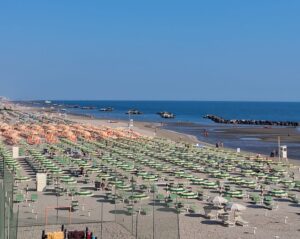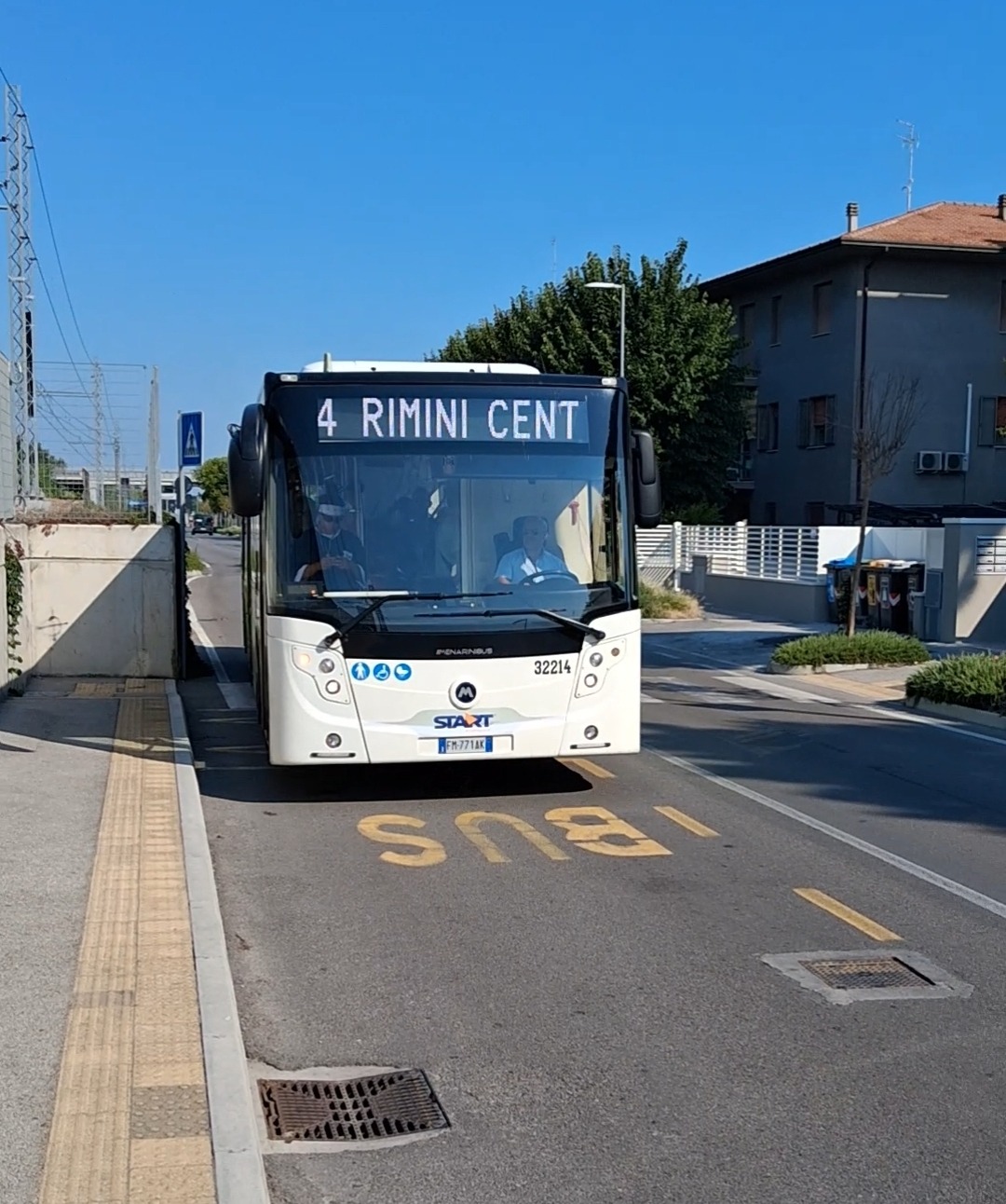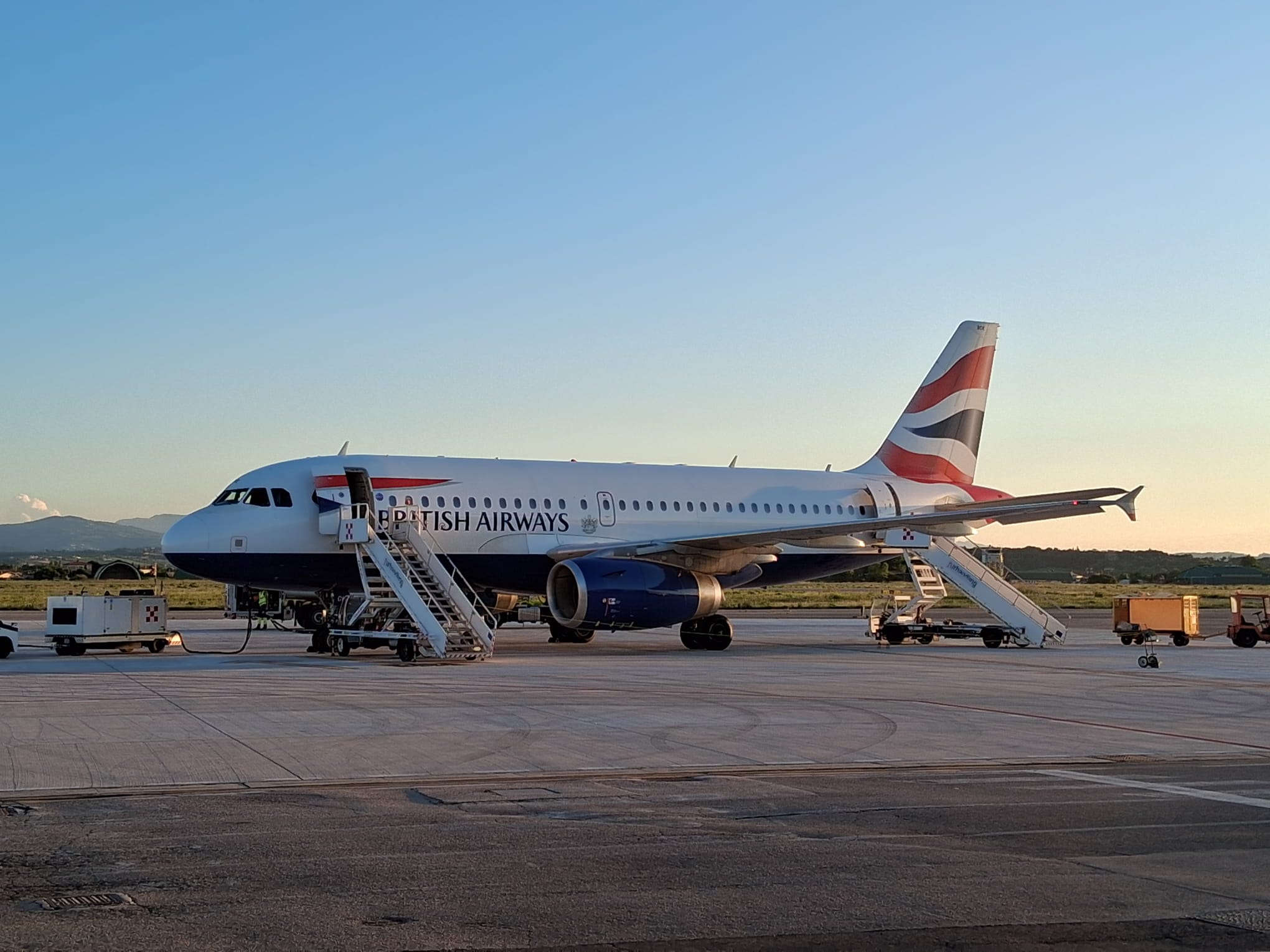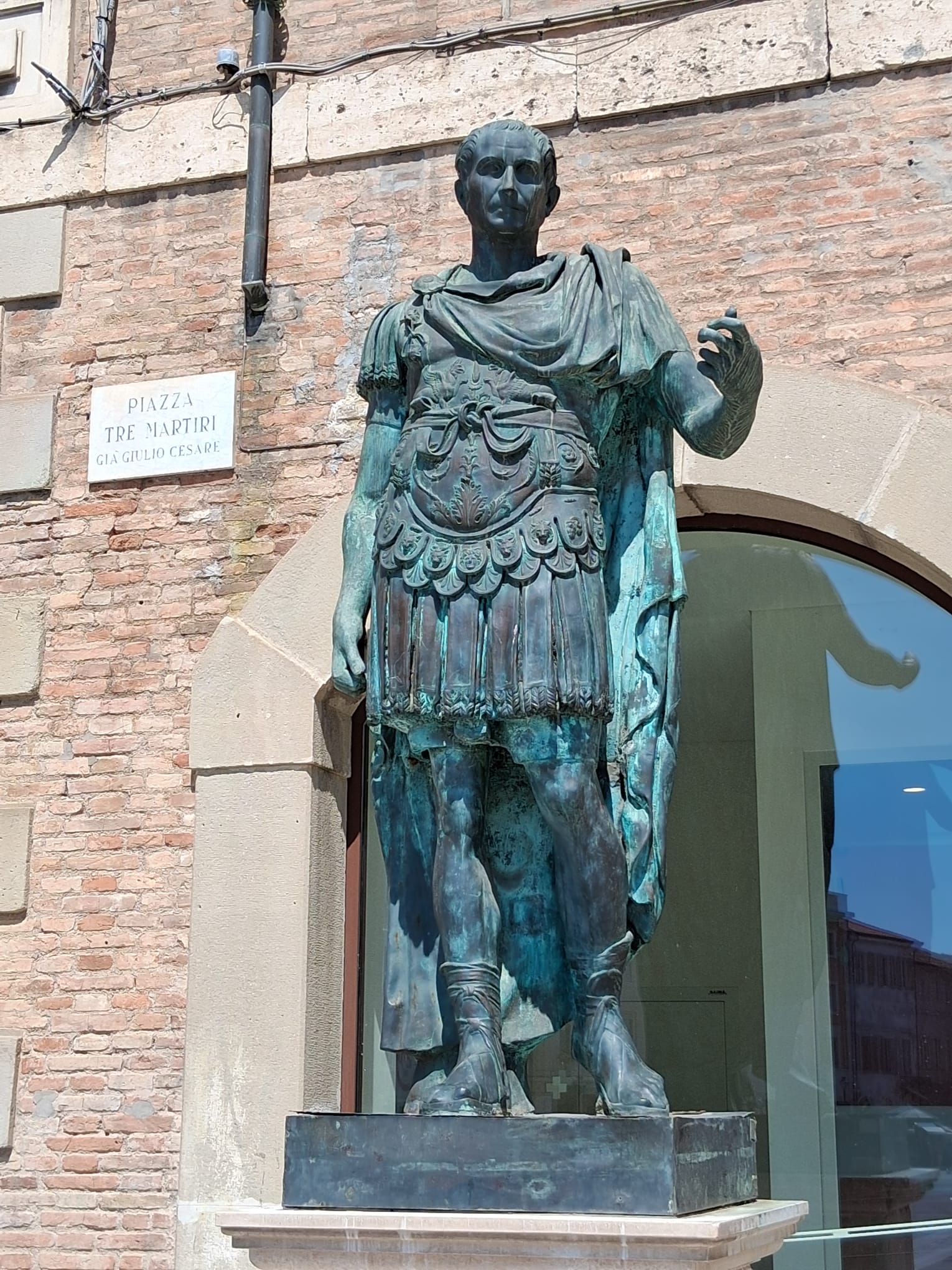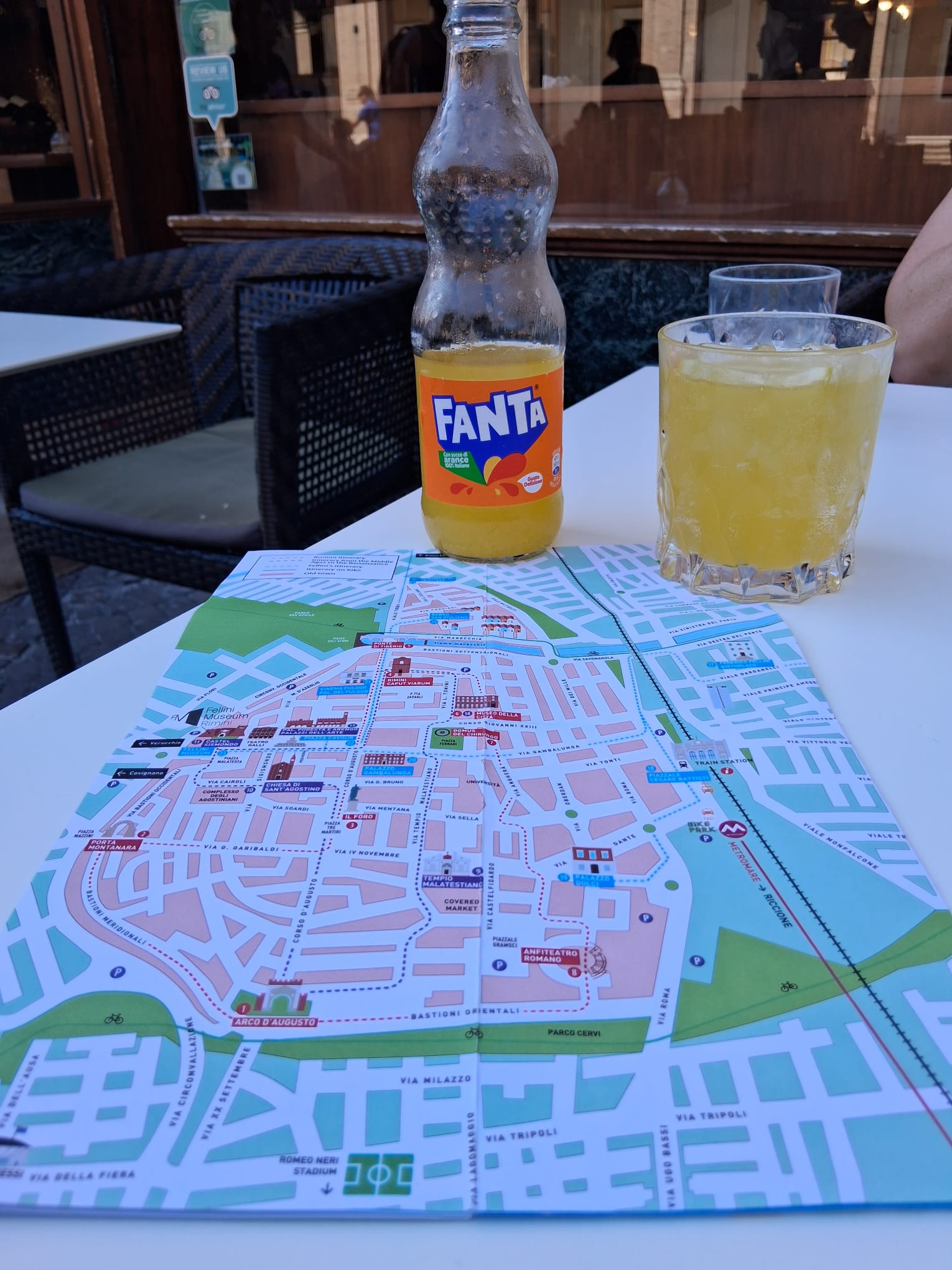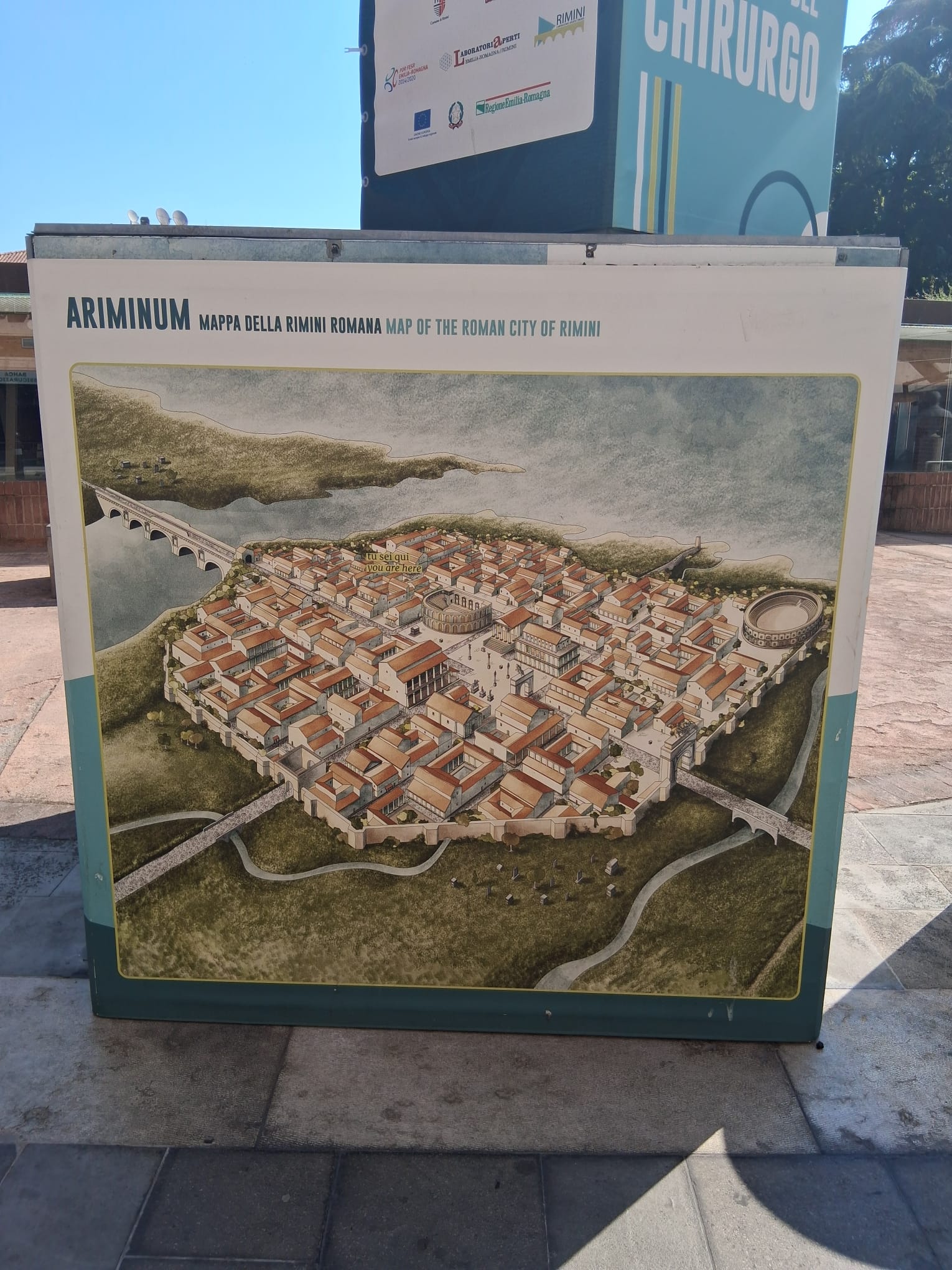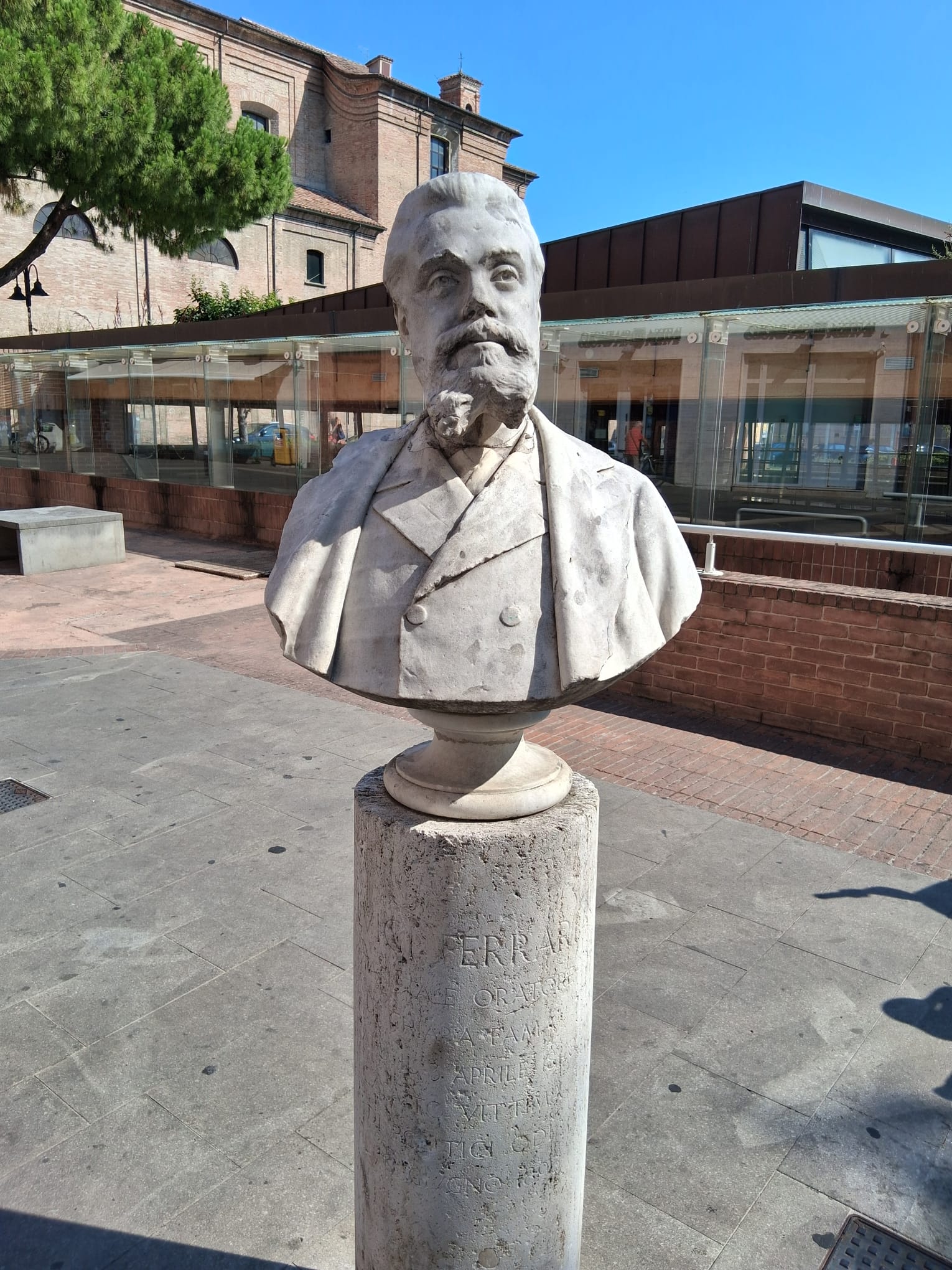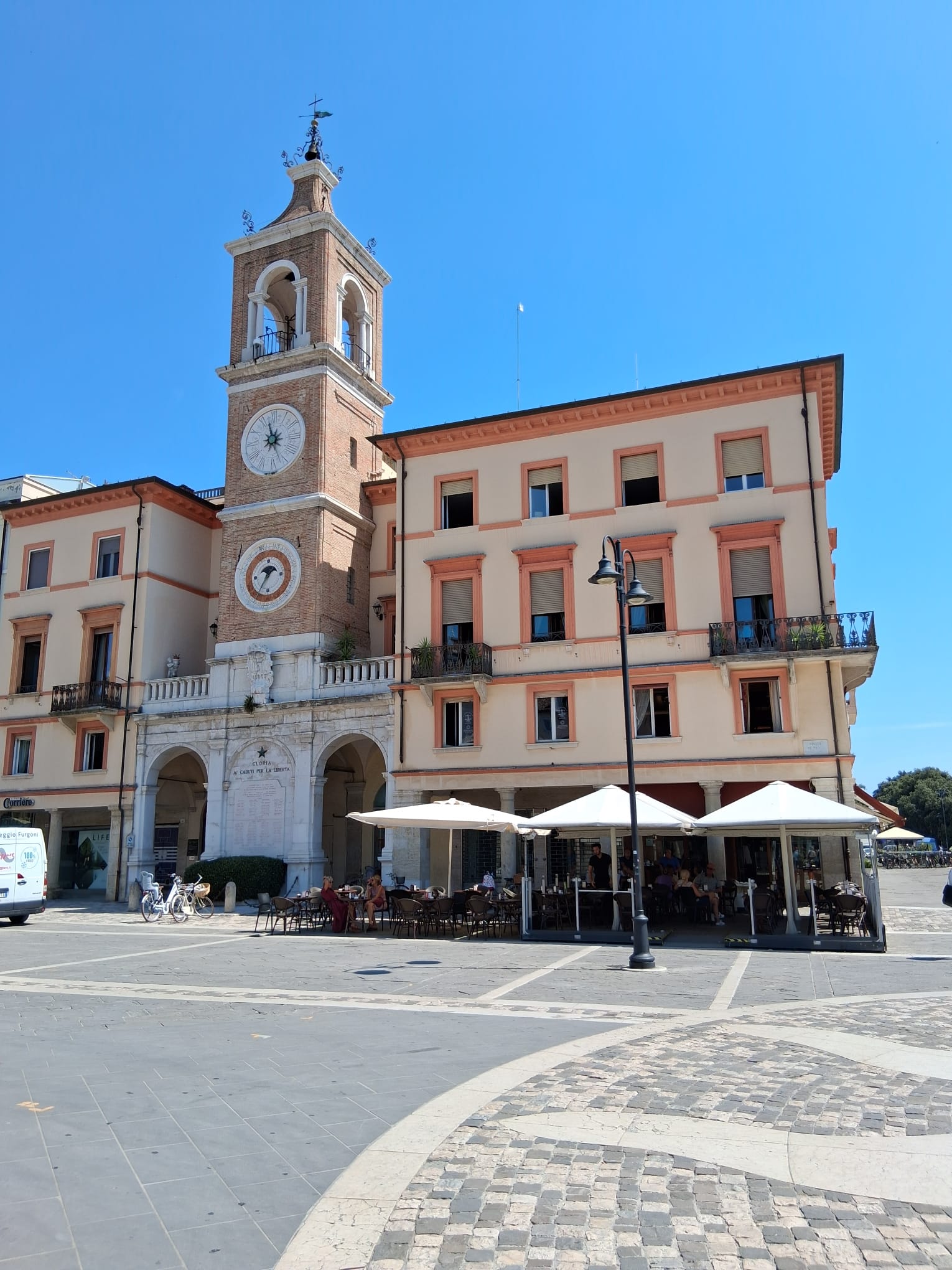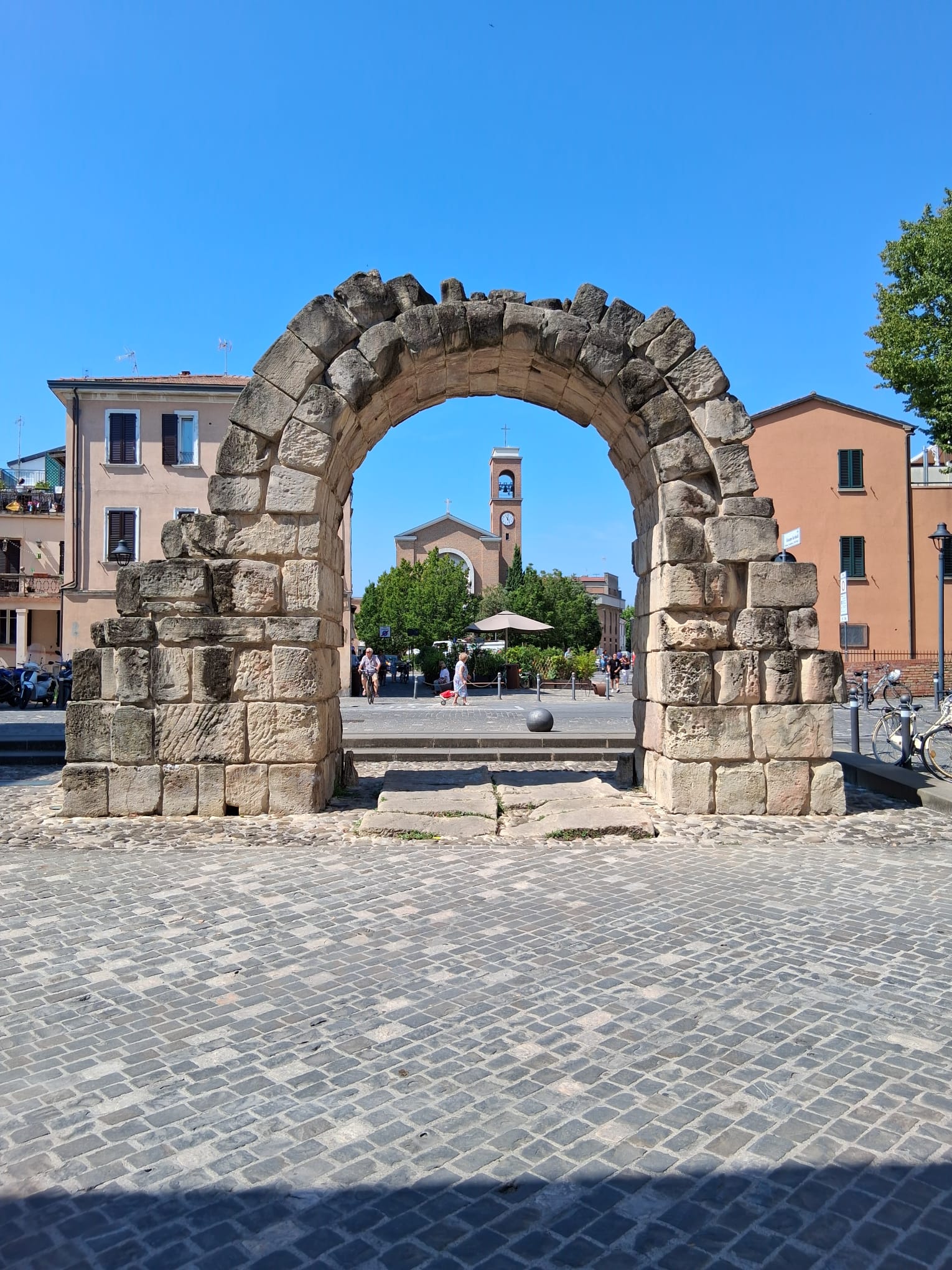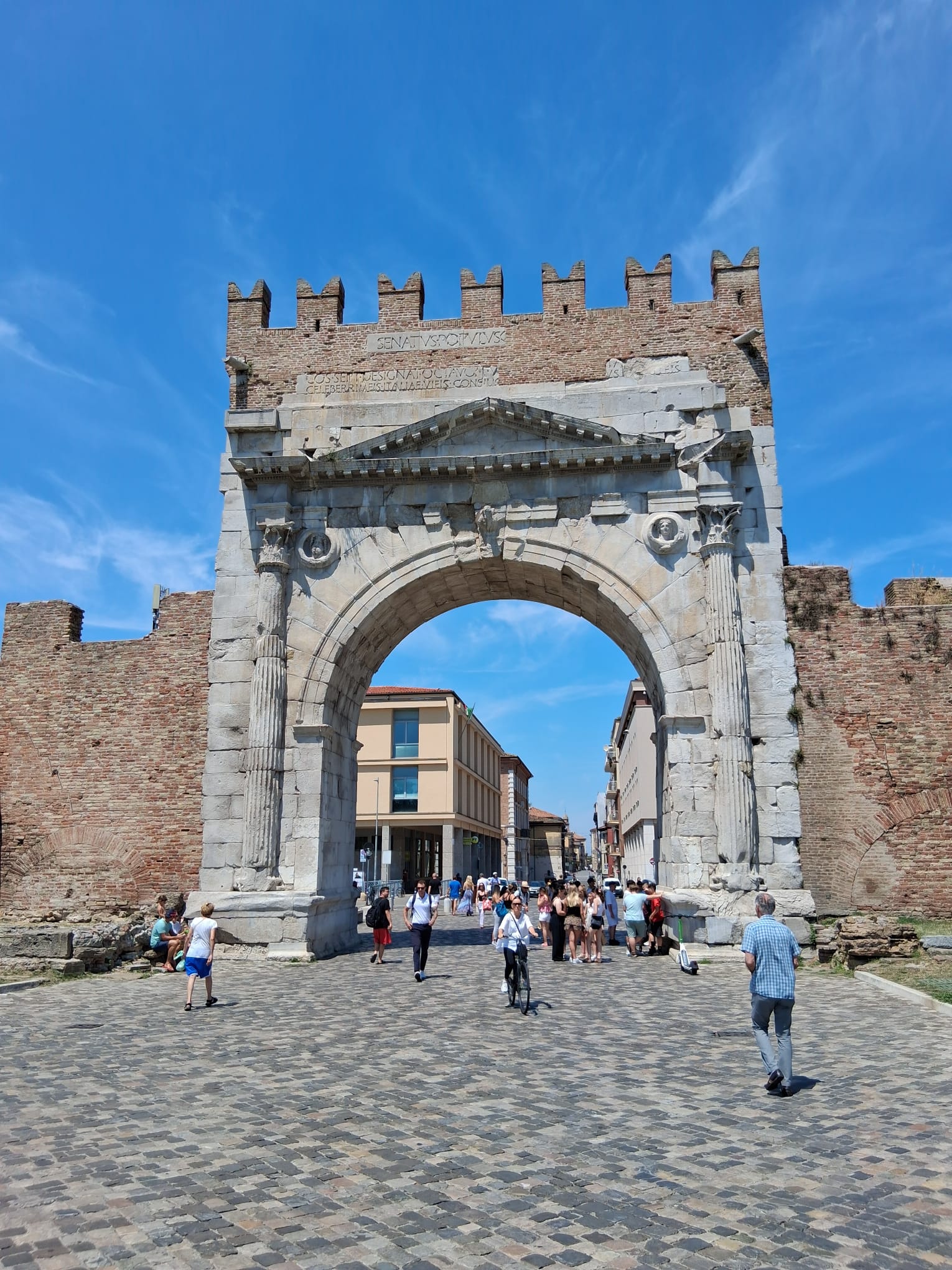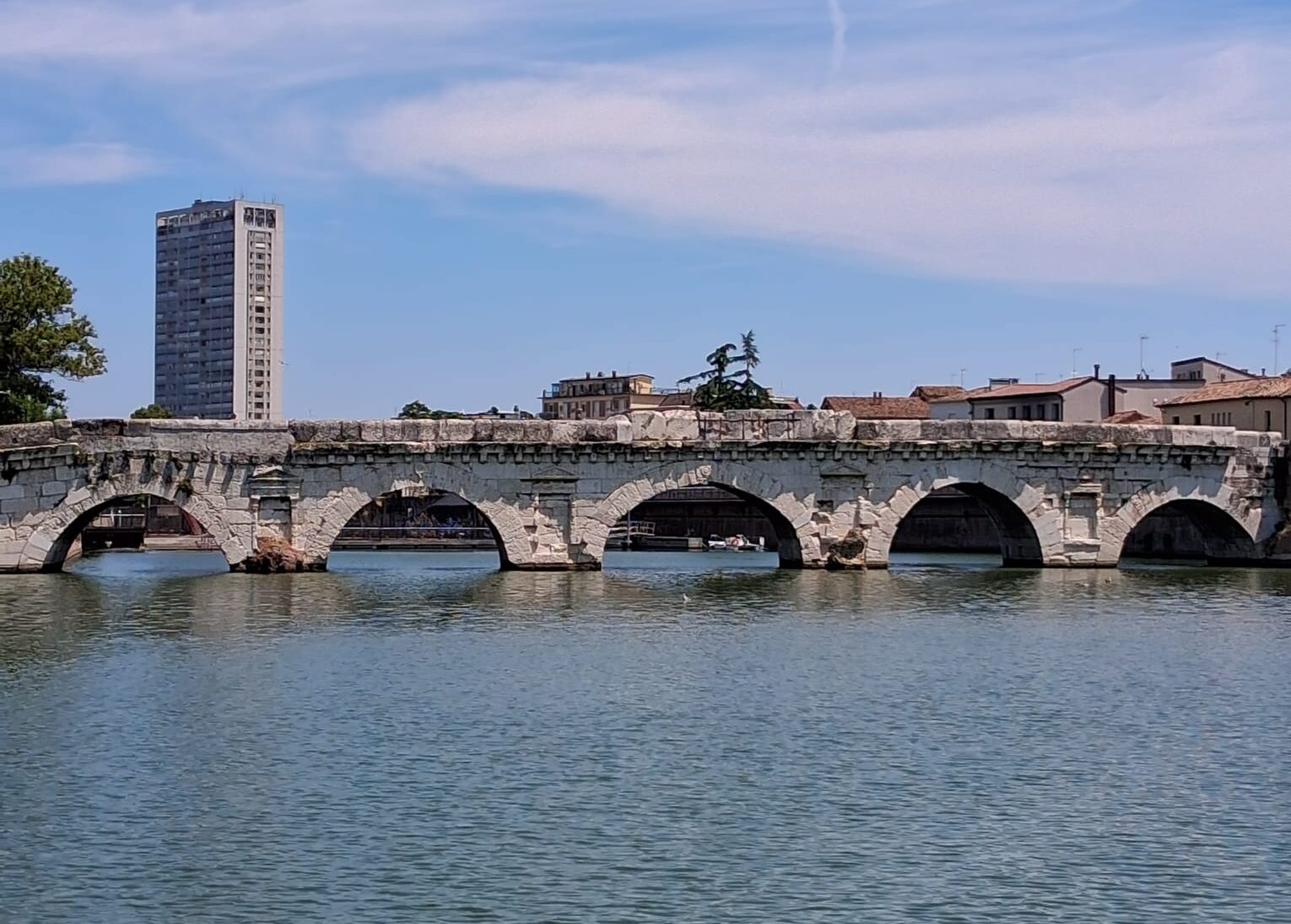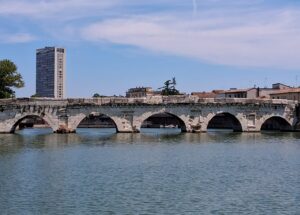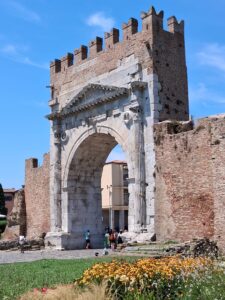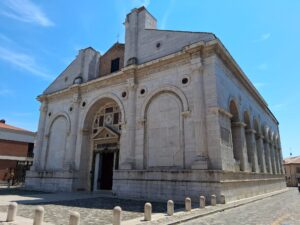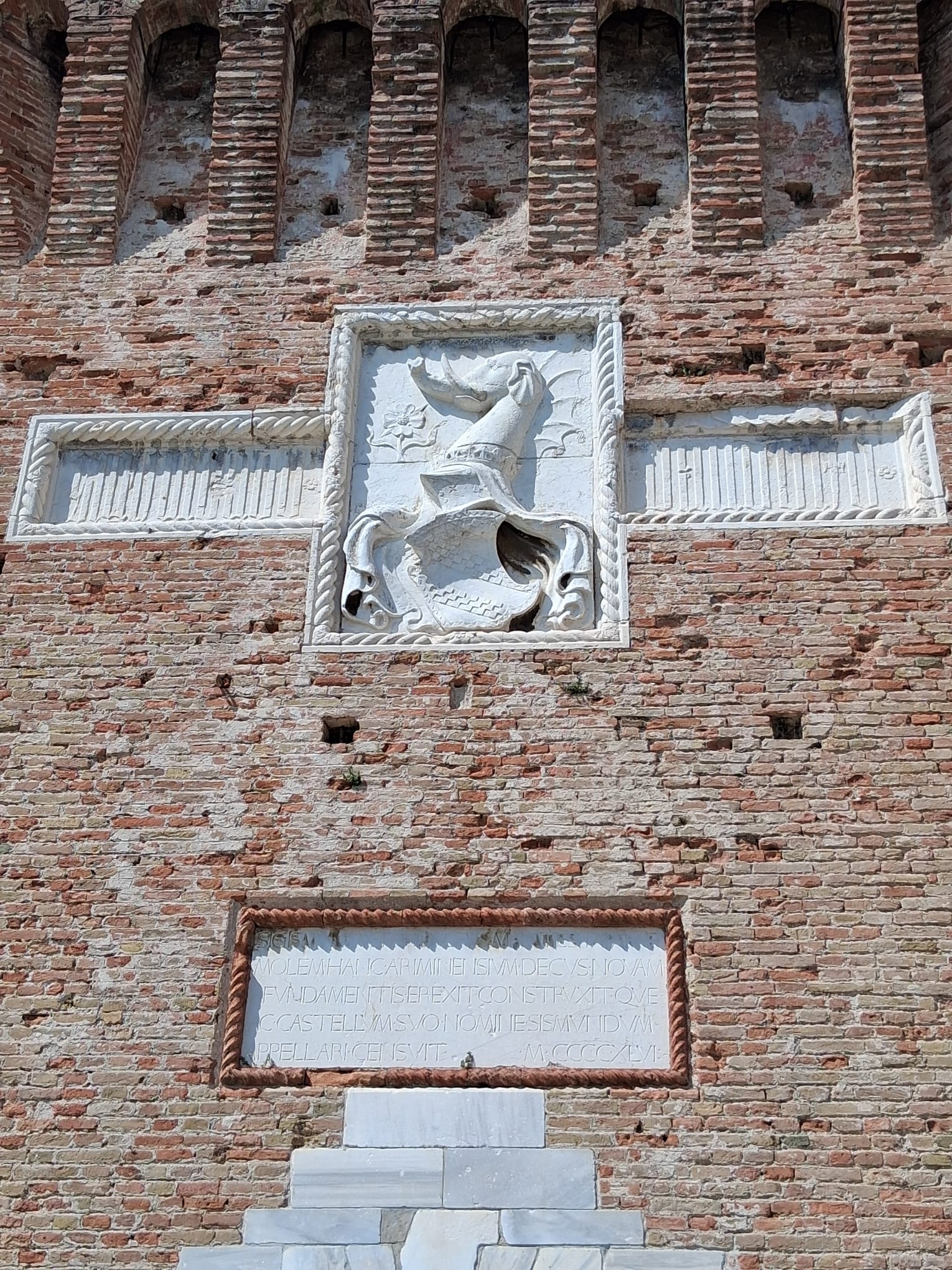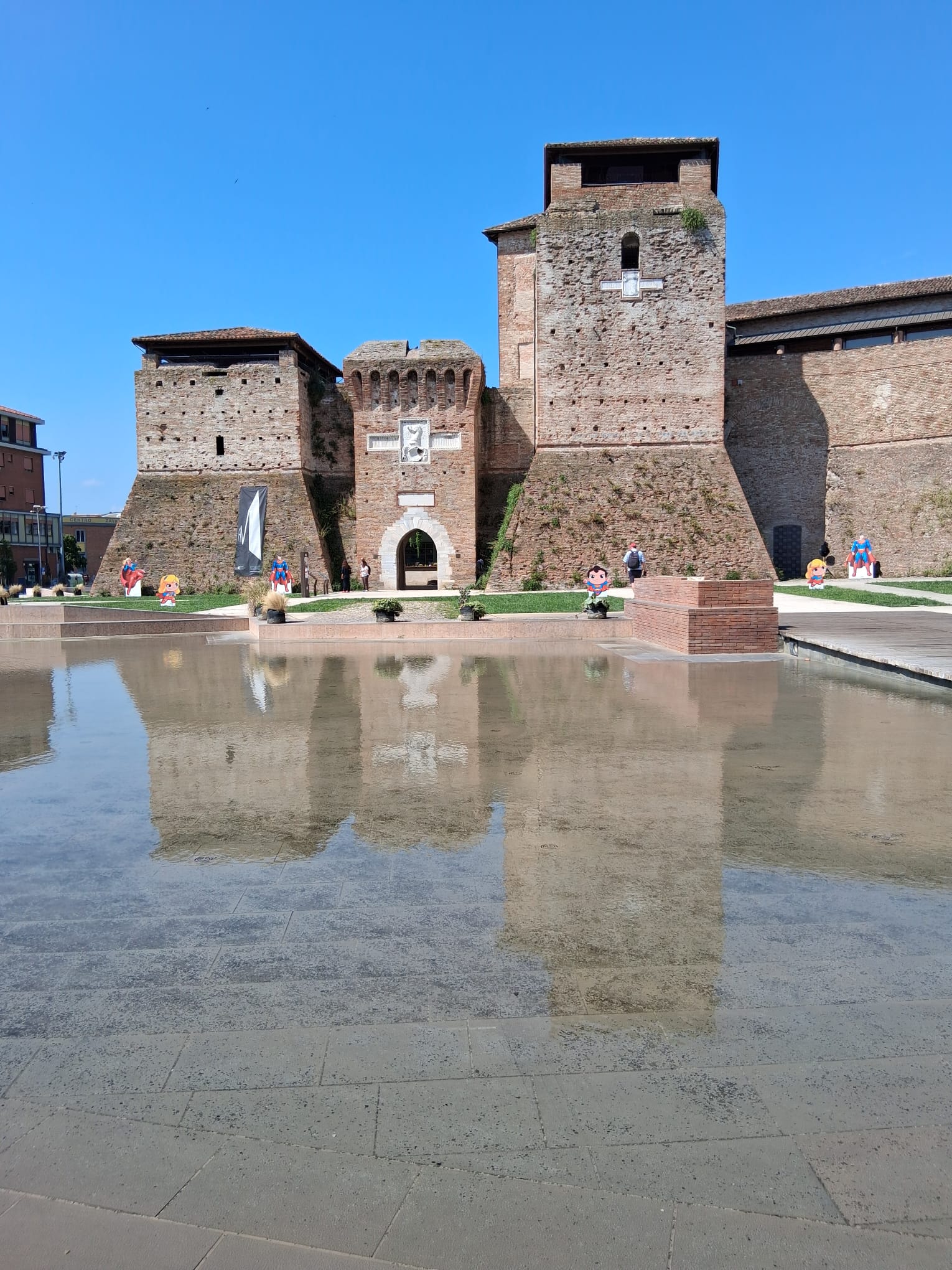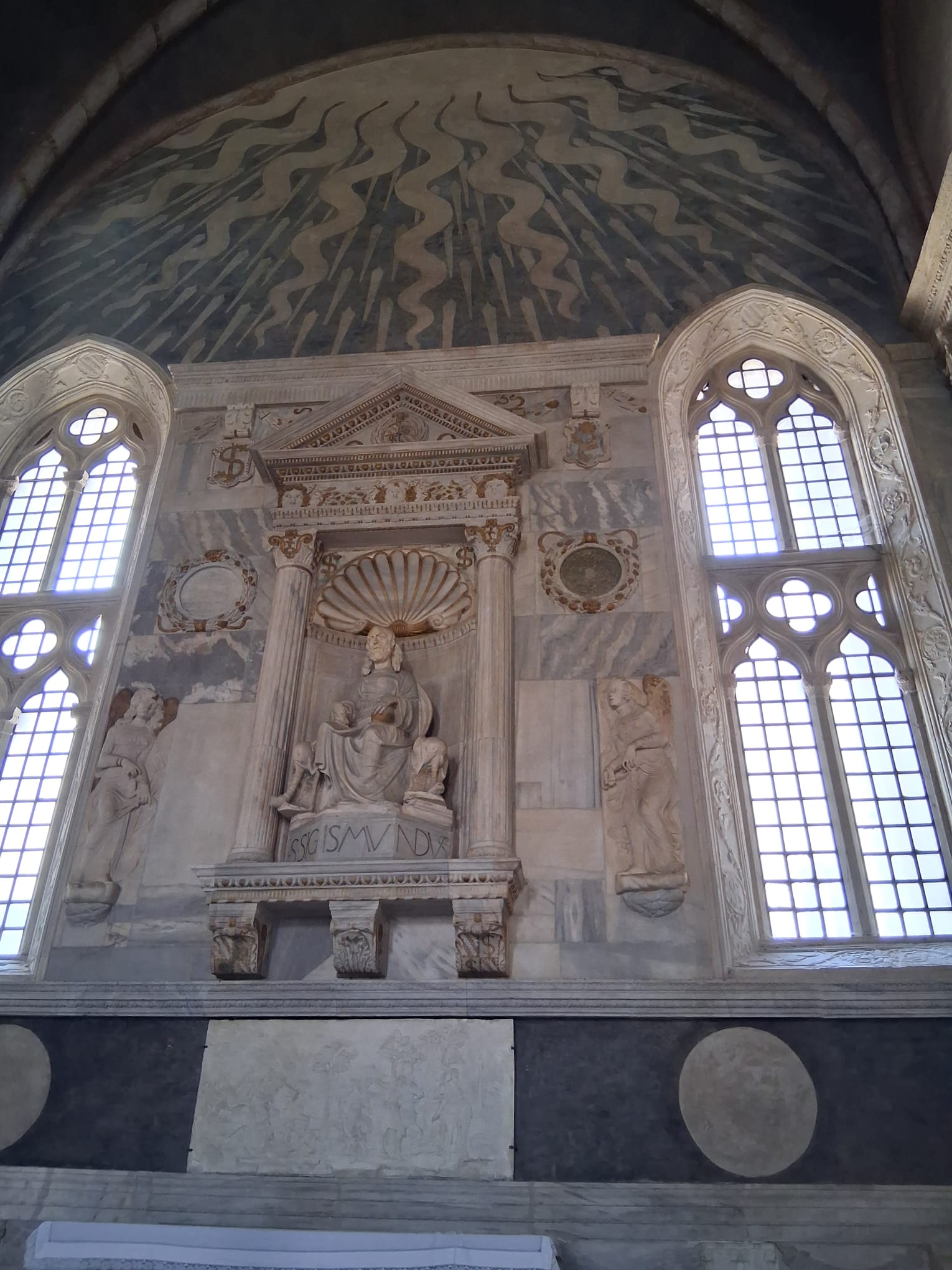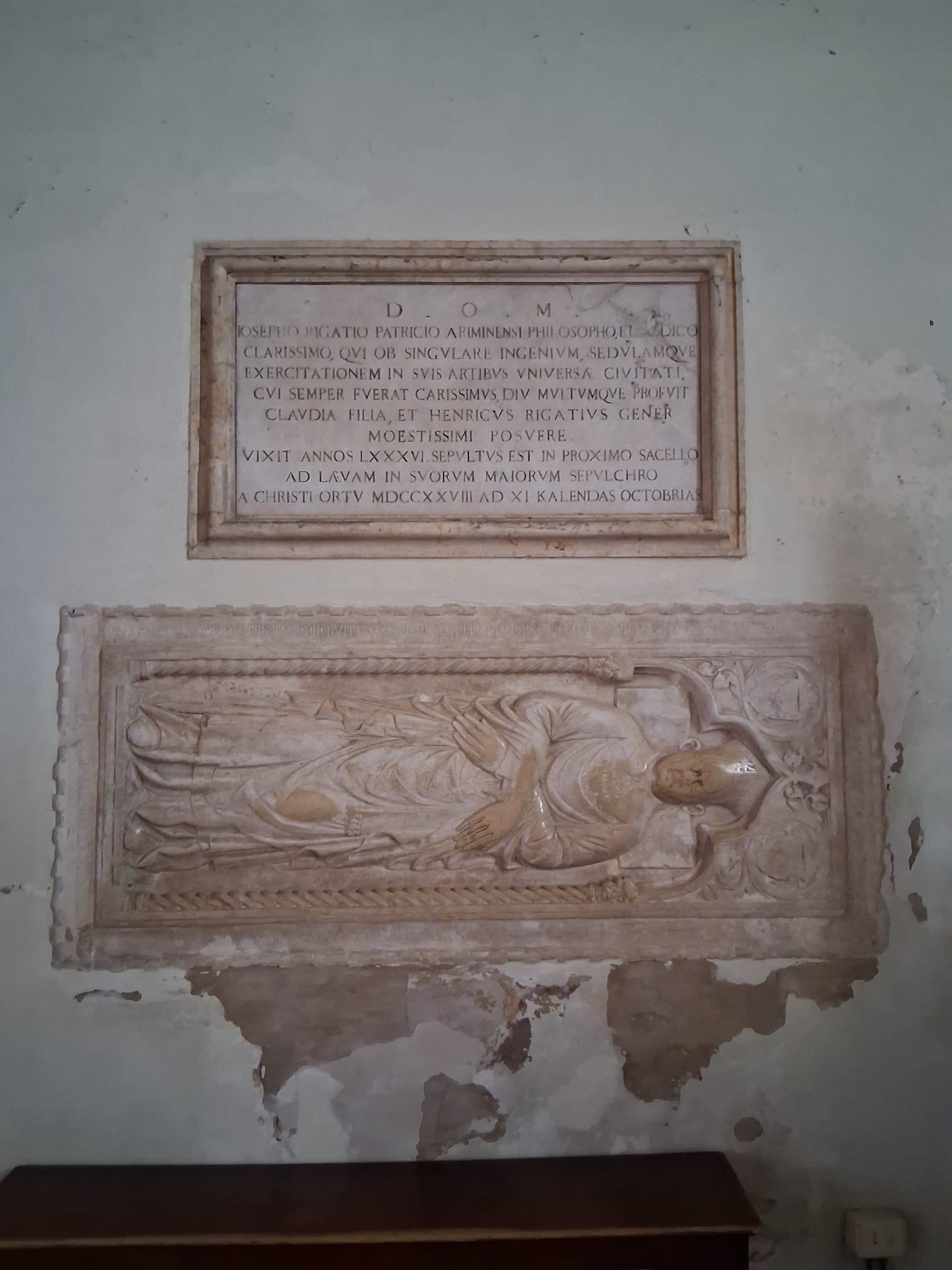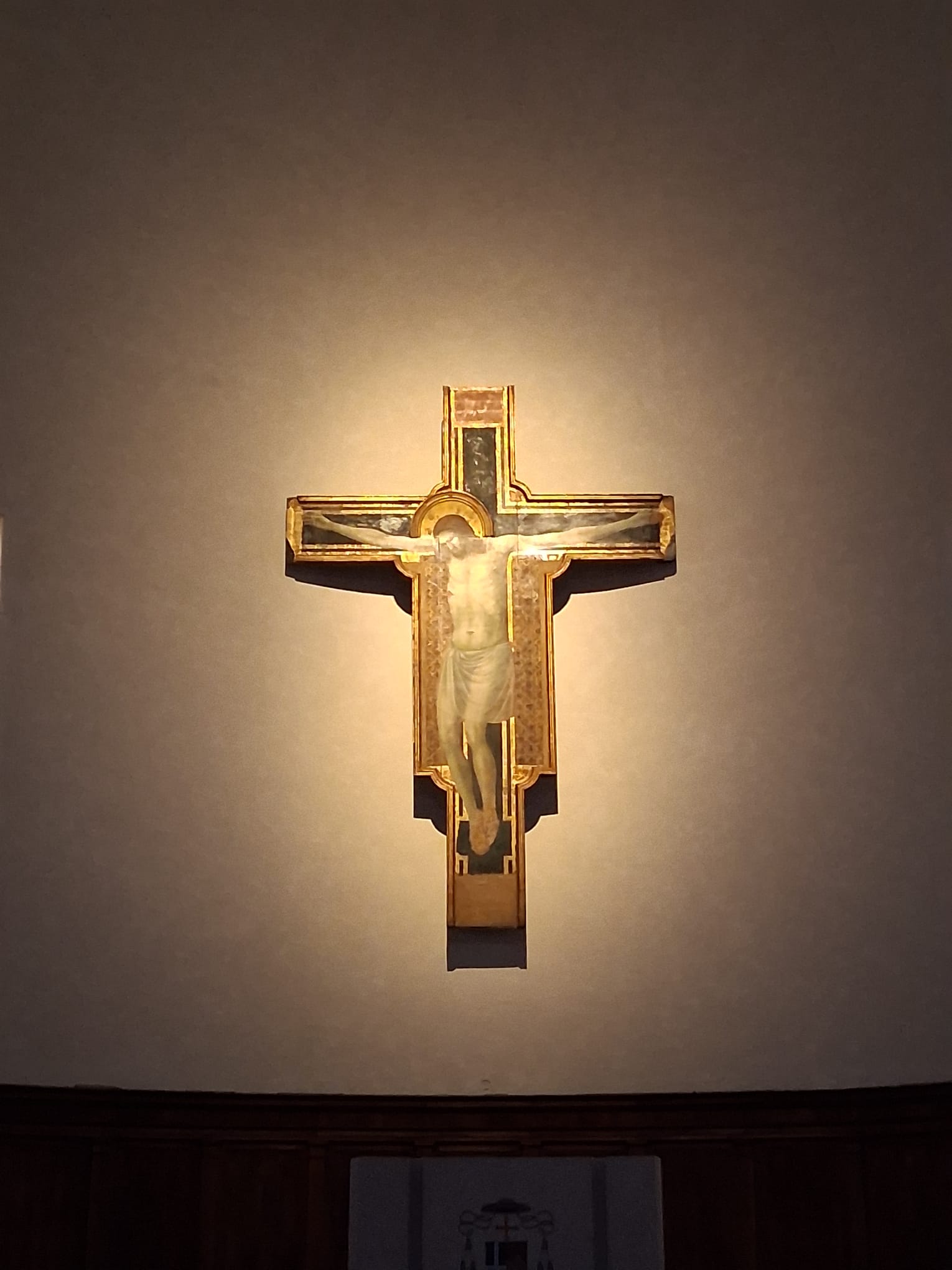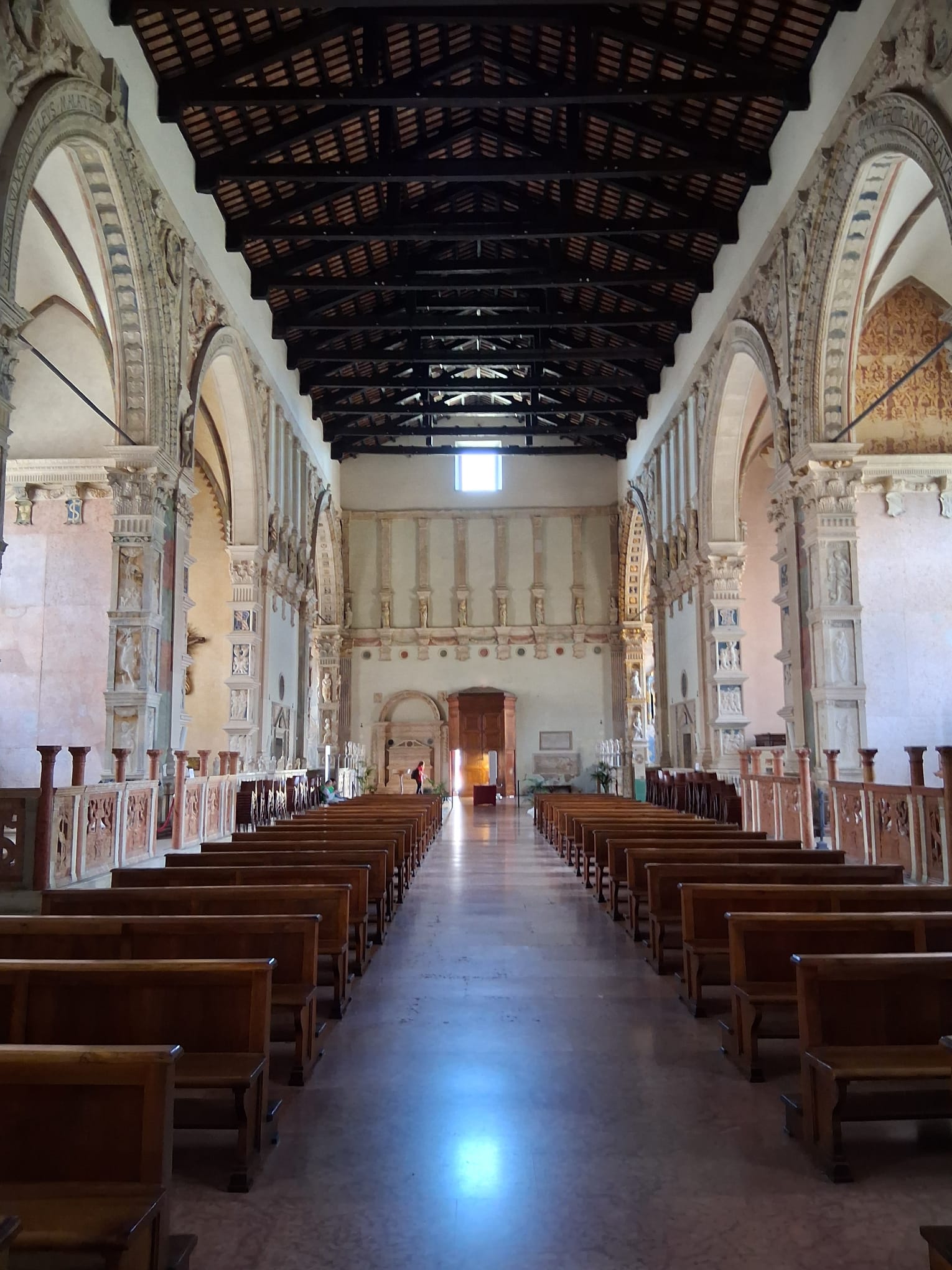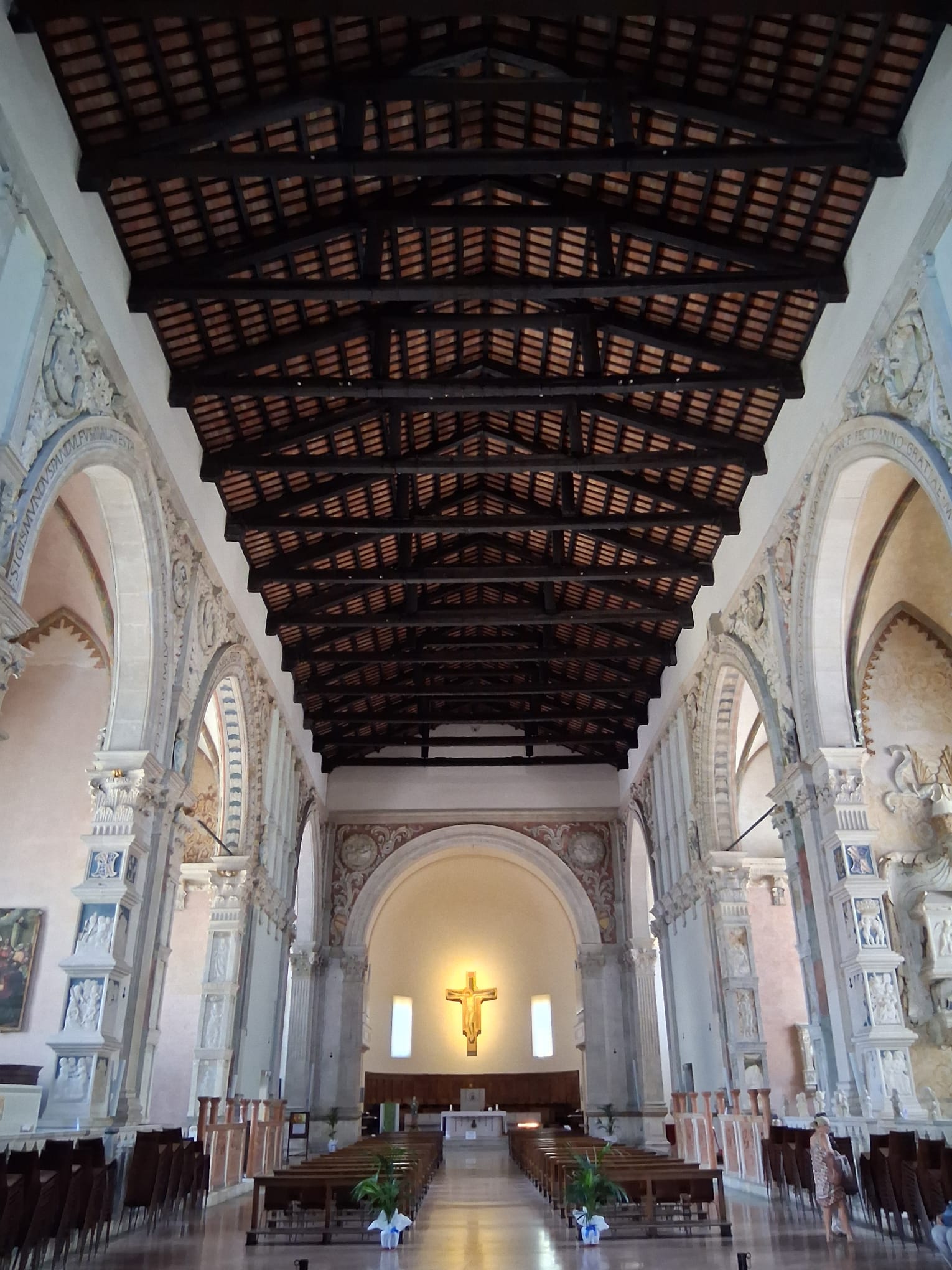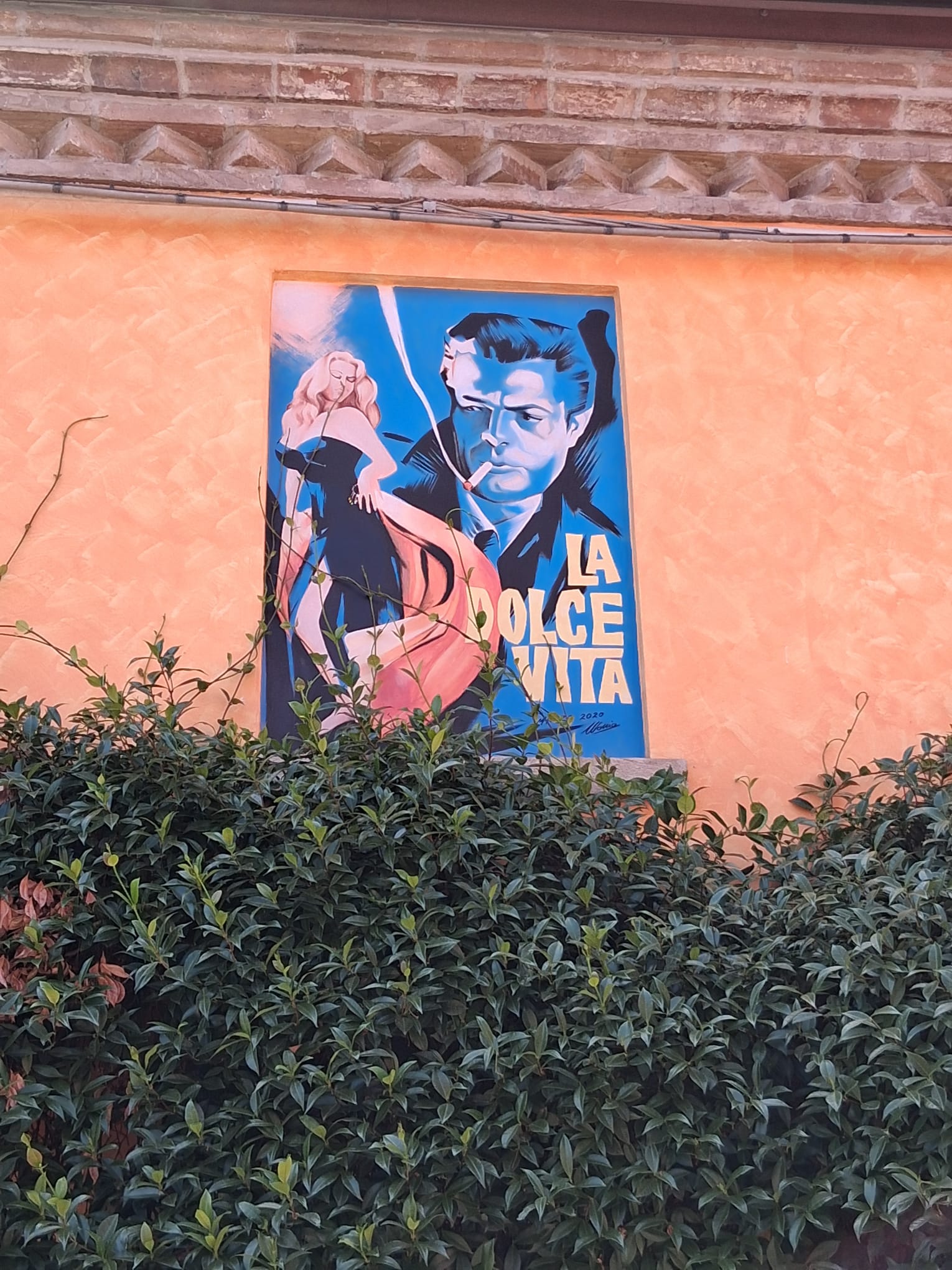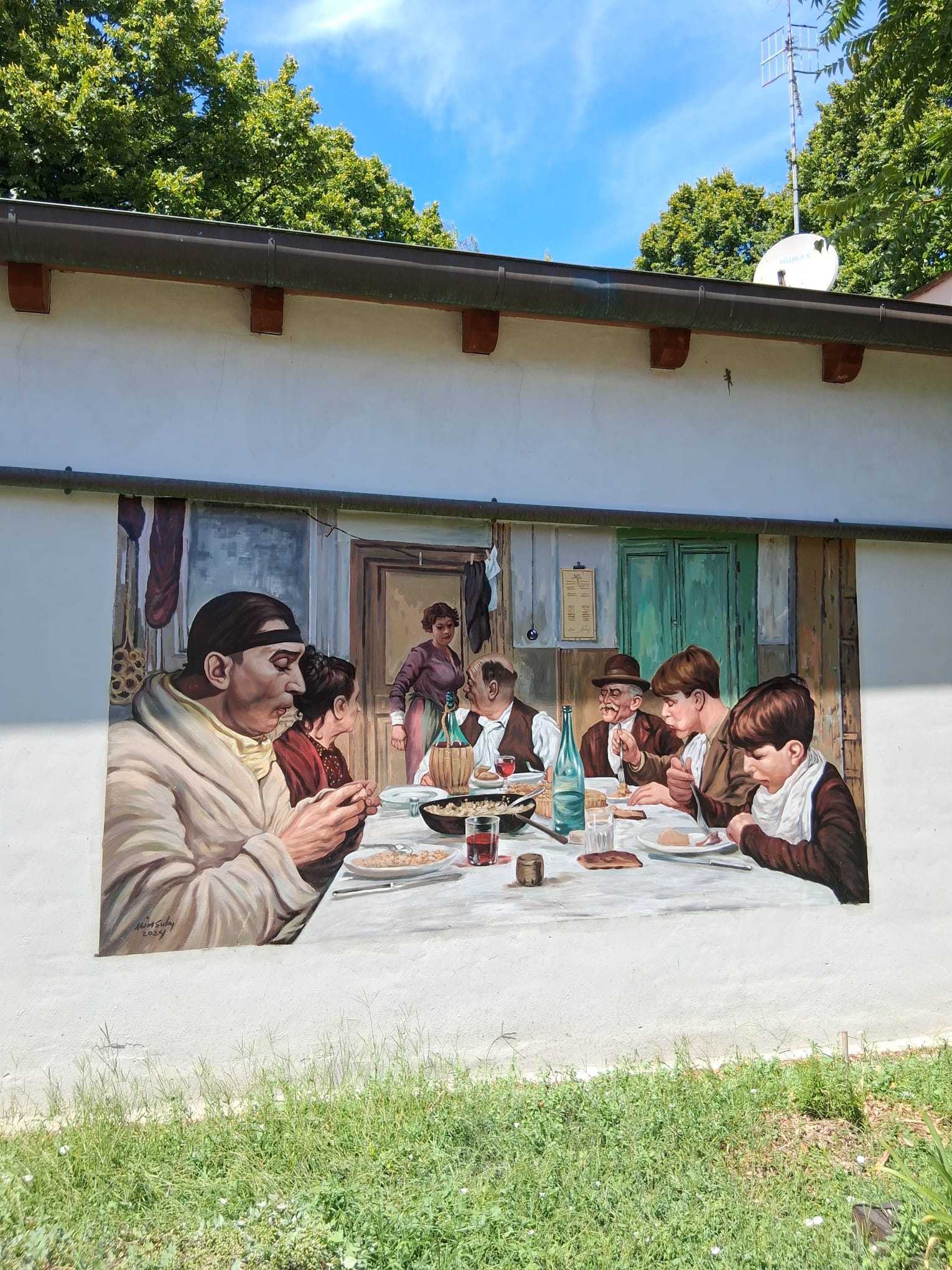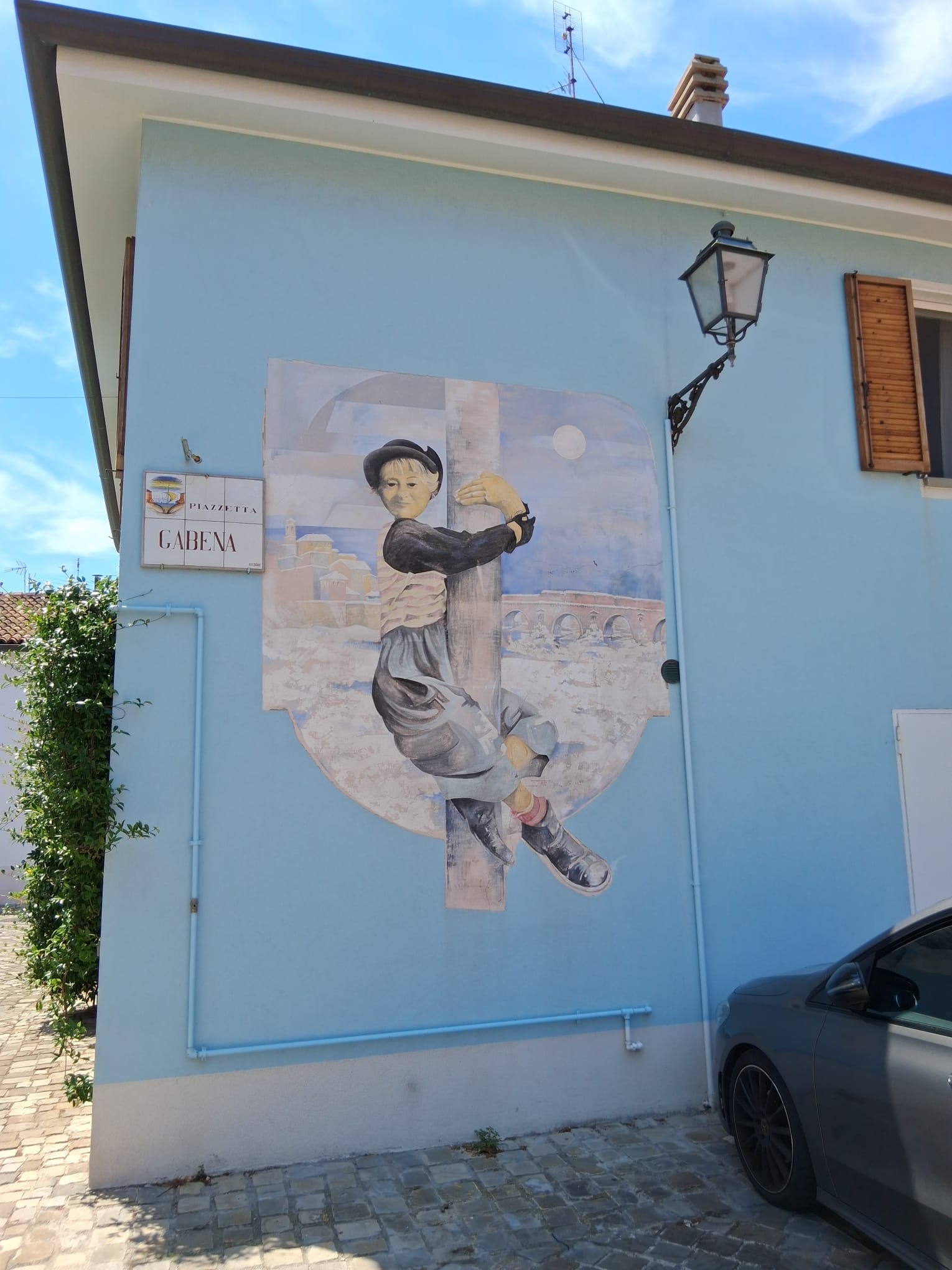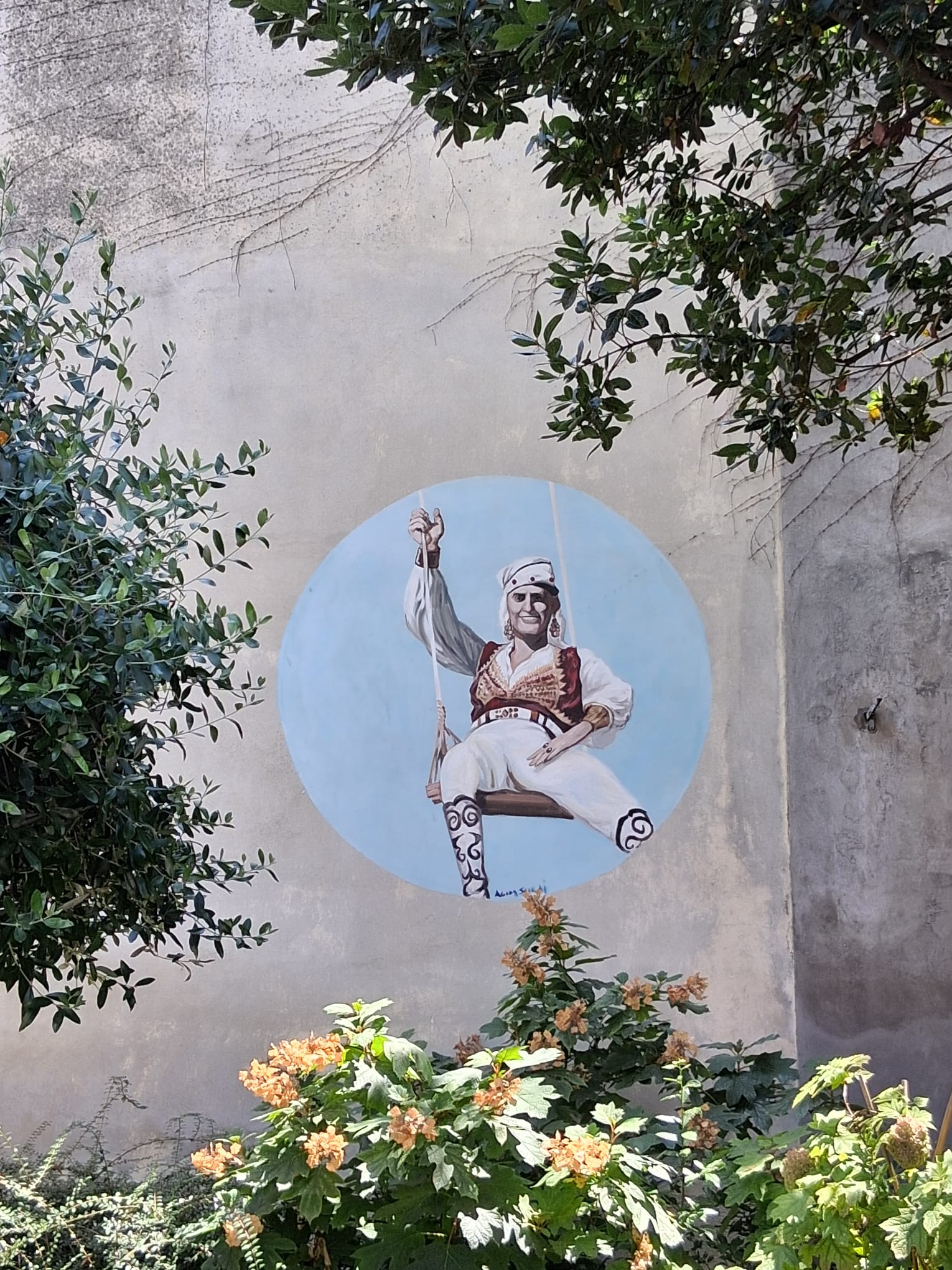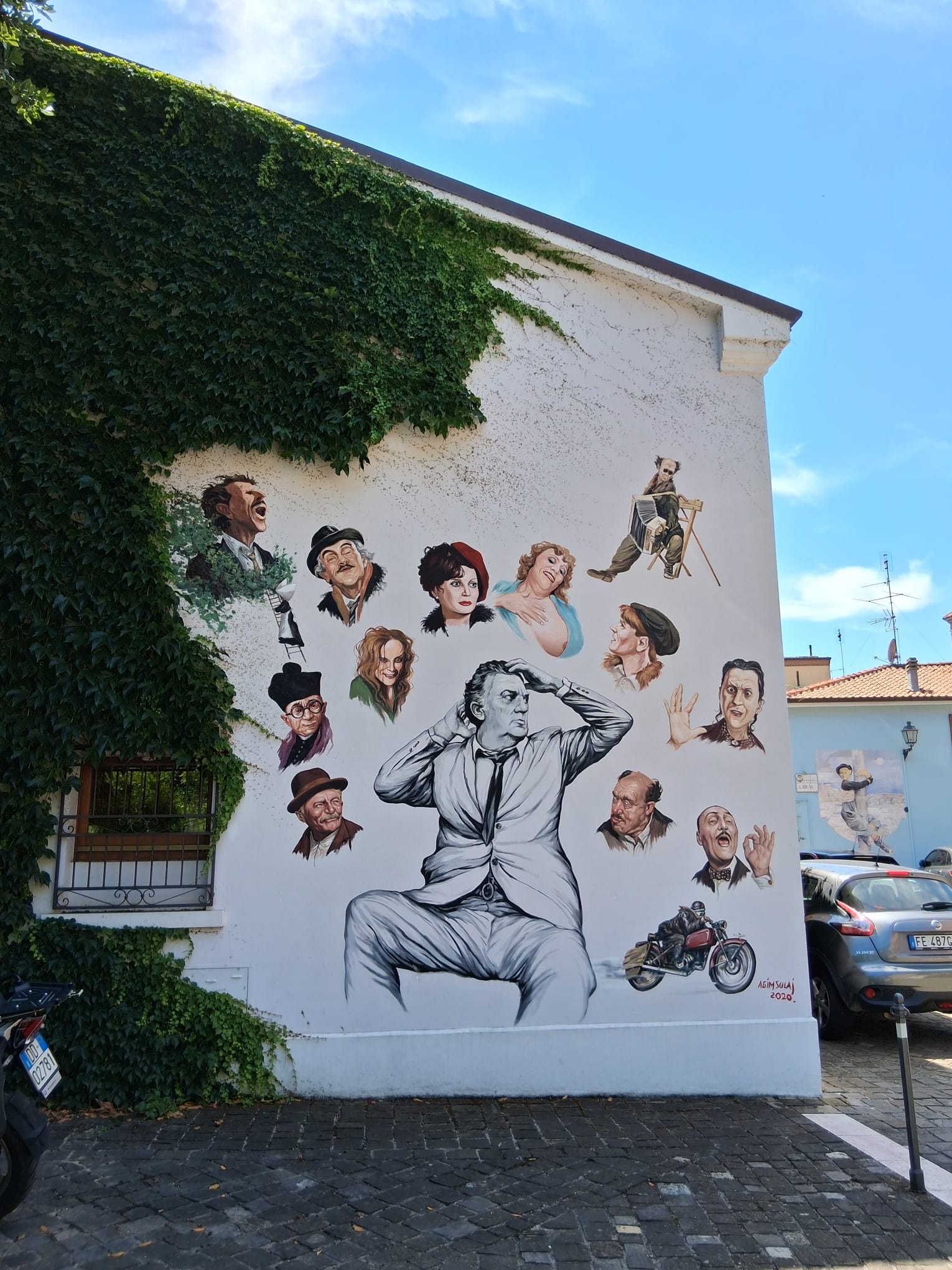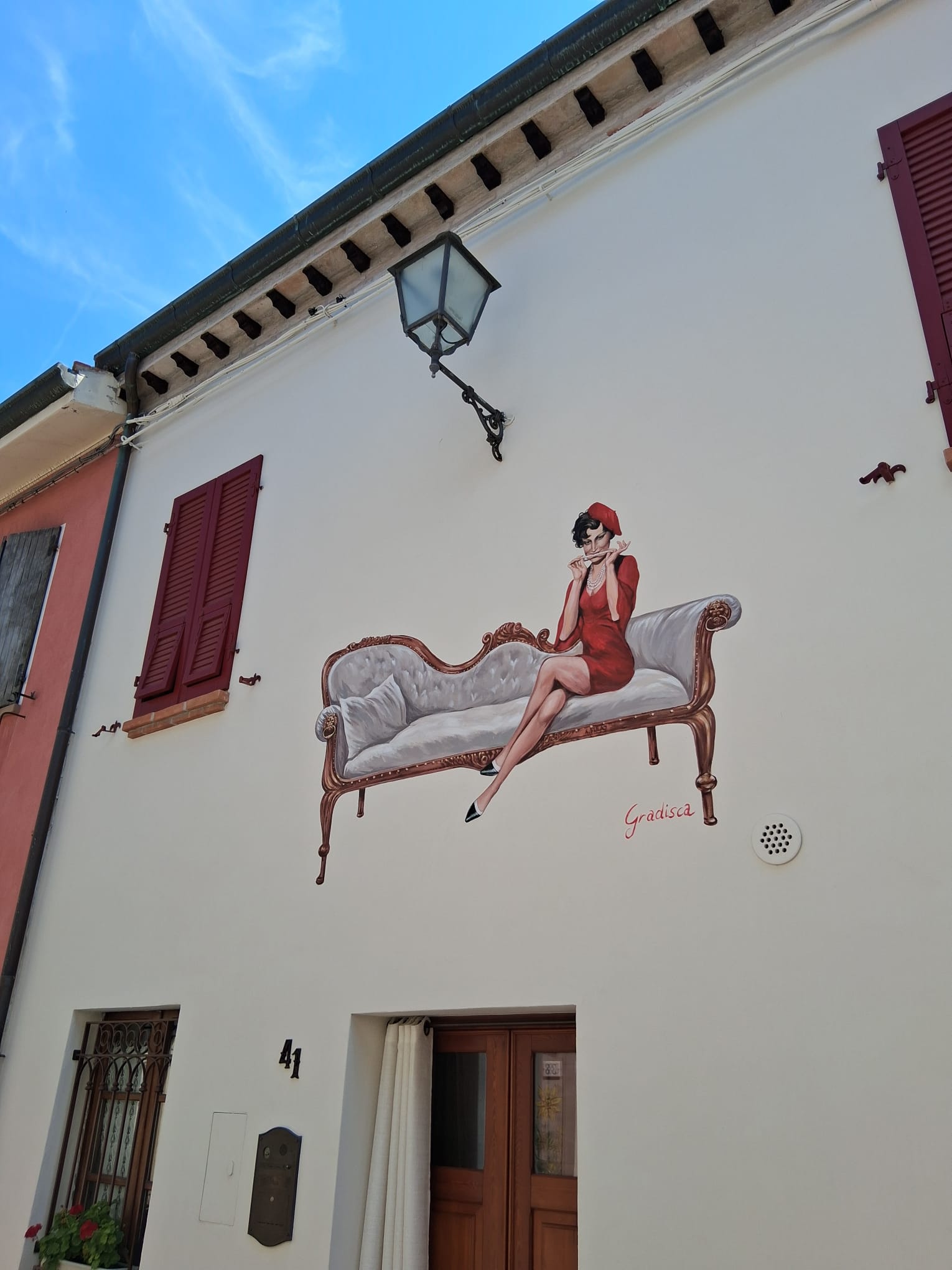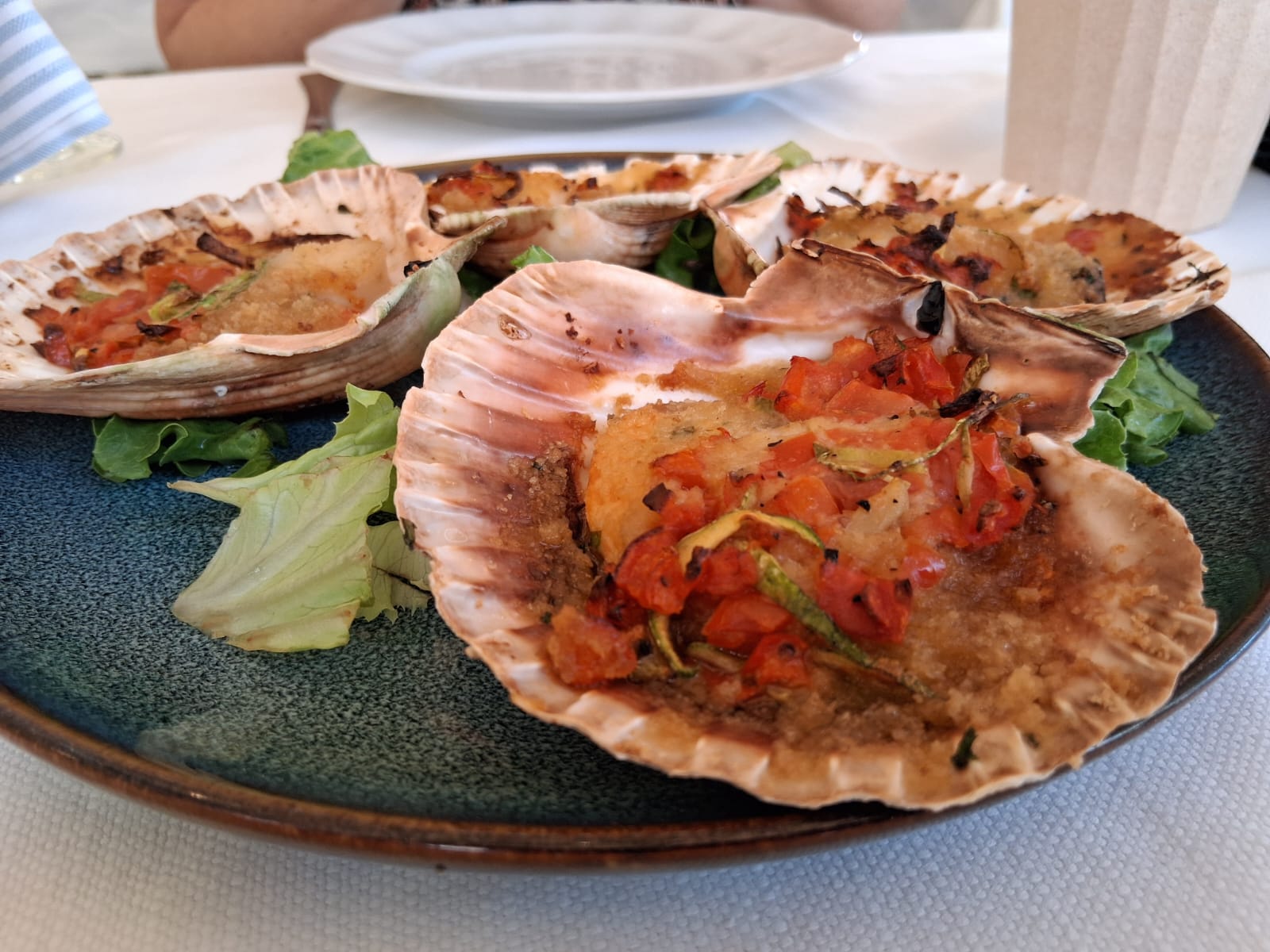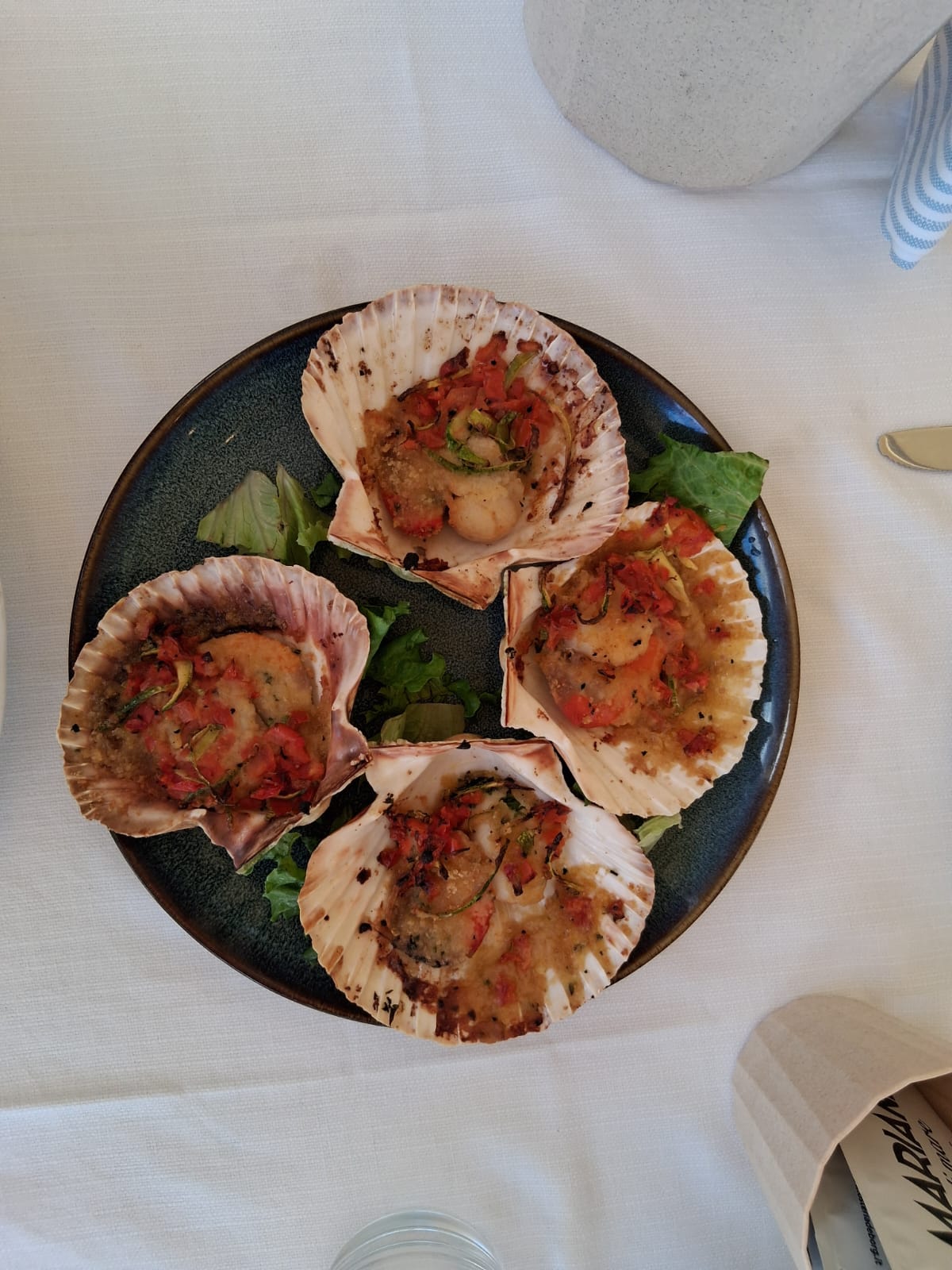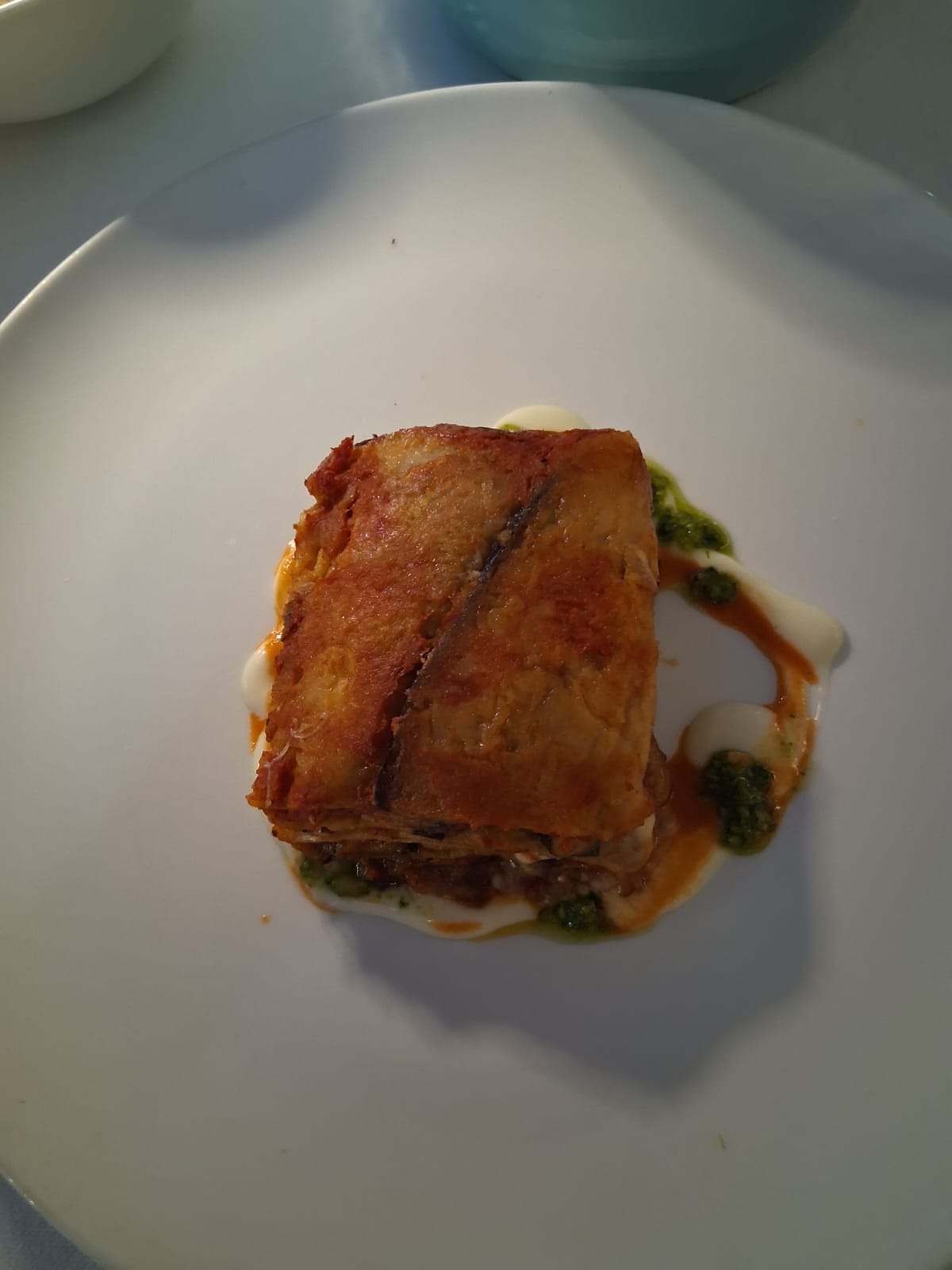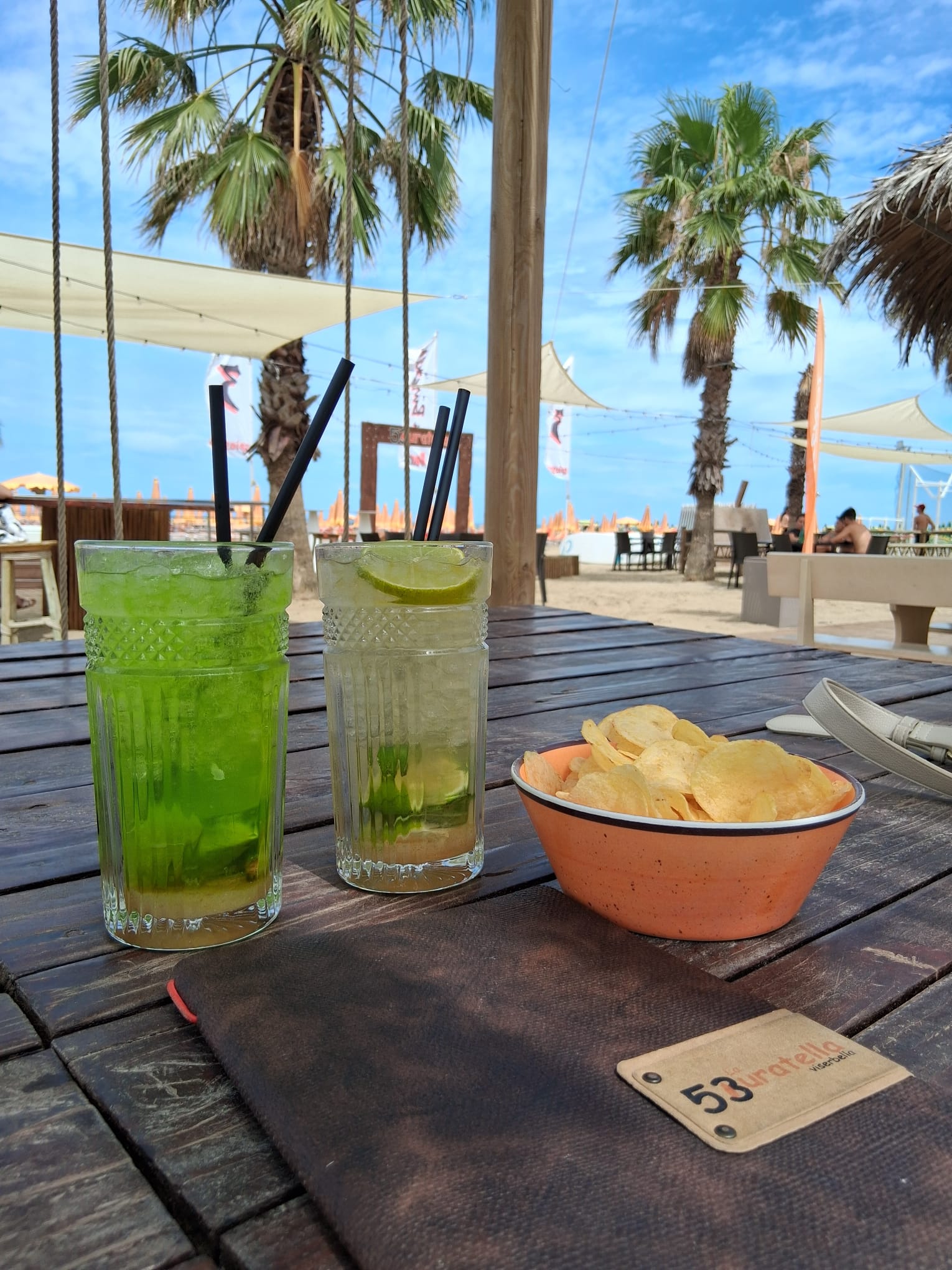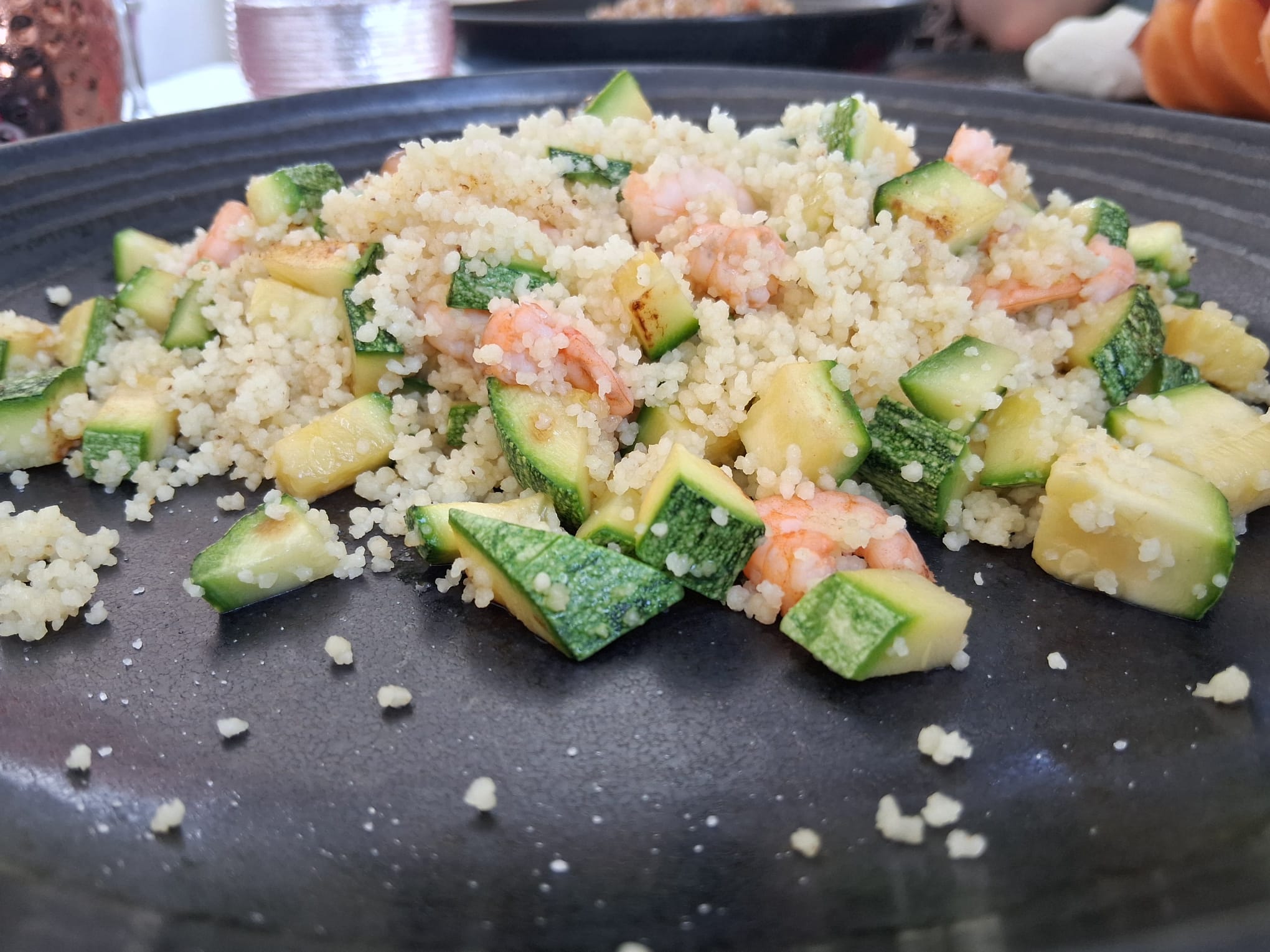Rimini has two stories to tell. To us Brits it isn’t a household name but to the Italians it’s the place to ‘summer’ and the search for ‘La dolce vita’. Now, as British Airways offered a direct route to Rimini during the summer, it was a chance to experience why people flock from all over the country to enjoy ‘the good life’ on the sandy strip.
Rimini’s famous beaches
Early in the morning the calm waters of the Adriatic Sea are heavily populated with locals searching for marine life (I assume to catch and then to consume). It certainly provided a fascinating watch as I enjoyed our morning stroll along the water’s edge. I was impressed and not a little curious by their desire for food and engagement in the activity. The gentle water was only disturbed by the Splish splash of my walking feet or the thrust of their ‘fishing’ sticks.
Up above, the cloudless blue skies set the scene for the day ahead as the lonely yet powerful sun beat down and warmed the body. Colourful umbrellas and loungers are lined in military precision along the beaches. There is an eye watering fee commanded for their use, but people must be prepared to pay. Every now and again the line is punctuated by a lonely lifeguard hut.
The stifling air is disturbed by the playful sounds as children awake from their slumber and participate in the entertainment provided in the tourist trap. Modern establishments overflow the nearby promenades enticing everyone in.
Scattered in between the shops are many differing and inviting drinking and eating establishments which, at nighttime, come alive. Rimini’s nightlife reputation is even evident before the sun sets at this time of year. The local hospitality is on full display, as bars become attractive meeting points and music beats out. The sleepy slumber of the day seems a distant past as the promenade resembles a jamboree.
More to Rimini than the beach
For those seeking something more interesting than the ‘eat, rave & repeat’ seek out Rimini’s historic centre. This is a city that offers a lot more than you expect and the perfect spot to explore the eastern parts of the Emilia-Romagna region. Rimini alone is worth exploring if you can drag yourself away from sunshine slumber.
The historic city centre displays all the great periods of Italian history. It was founded as a colony by the Romans before the Malatesta dynasty ruled over the city. Latterly the city has been transformed into a tourist destination. Great efforts have been made to rebuild the city after 90% of the historic centre was destroyed in the Second World War (WWII) bombings.
Getting to Rimini
For those staying by the beaches there is good provision of local public services connecting to the historic city centre. There are cheap bus routes which are easy to navigate. The city also has its own railway station which connects to Bologna which in turn connects to the rest of Italy.
For those flying in from Britain there is a choice from British Airways, EasyJet and Ryanair flights. The airport is small and dated but serves the area including the country of San Marino. If I’m lucky enough to return an opportunity to explore another country must surely be taken.
Roman Rimini
Rimini’s historic city centre is small and easy to navigate on foot even during the hot summer sun. Leaving the bus stop we walk into the heart of the city. On route we pass an archaeological site, which is evidence of the Roman occupation 2000 years ago. The discoveries made confirm the owners name – Eutyches (this Greek sounding name suggests that he was Greek) – and some fascinating artefacts. The exceptional find includes around 150 surgical instruments and is referred to as the surgeon’s house.
Sadly, the site wasn’t visited, as it was closed at the time we passed by. The site can be seen through the glass walls. This was the first of a few Roman attractions the city has to offer. Running through the middle of Rimini is Corso de Augusto. Roughly in the middle is Piazza Tre Martiri and this Piazza was the heart of the Roman city established which was called Ariminium. At the northern end of the square is a large bronze monument of Julius Cesear pointing in the direction of Rome. It is said that he uttered his famous words “the die is cast “(Alea iacta est) at this very spot before ordering an attack on Rome.
At the Northern end of Corso de Augusto is the impressive Tiberius Bridge and, at its Southern end, the triumphal Arch of Augustus. I focus on these two Roman Rimini sites on this whistle stop tour of the city.
Tiberius Bridge
Commonly known as ‘Tiberius Bridge’ it saw its foundation stone laid in the reign of Augustus (reigned 27BC – 14AD) in the year that he died. It took 7 years to build and was completed during the reign of Tiberius (reigned 14-37AD). As a result of this work Rimini became a principal junction in the Roman road system of Roman Italy. The bridge is built out of Istrian stone in a Doric (the oldest and simplest of the Greek architectural orders) style. It consists of 5 arches which span across the ancient Marecchia basin.
Arch of Augustus
Often referred to as Arco d’Augusto this was constructed in 27BC for Rome’s first emperor. The archway, like the bridge, is so important to the city, that it has become a symbol of Rimini. This has resulted in the arch appearing on the city’s coat of arms.
Renaissance Remini
There are two other areas (the castle & temple) that I found of historical significance in the city. They’re associated with the Malatesta dynasty that ruled over the city from 1295 to 1500. The Malatesta’s position of power came through the wars between the Guelf and Ghibelline in the 13th century. Malatesta da Verucchio managed to kick out the Ghibelline leaders and became lord of the city in 1295.
Before they lost support of the city and had to flee in 1500, Sigismondo Malatesta ruled it. This time coincided with the junior line of the Medici family of which I found out much in Florence. Sigismondo built the castle that sits within the city centre along with building a mausoleum that was not finished.
Castel Sismondo
The castle was named after the city’s greatest renaissance lord Sigismondo Pandolfo Malatesta. Construction began in 1437 and took 15 years to complete, with the first inhabitants moving into the fortified residence in 1446. Filippo Brunelleschi provided advice regarding its defences. Its location was important as it towered over the seats of civil and religious power.
The castle seen today is a smaller version of the original. After Sigismondo’s death, the end of the family dynasty was approaching as was the growing power of the papacy.
When Cesare Borgia marched on the city in 1500 it became part of the papal states. By the 17th century profound changes were made to the castle – the towers were lowered, walls demolished, and the moat filled in, etc. Looking at the castle now, it’s incredible to think of the actual size it once was. The square towers look a formidable sight even now such that it is difficult to imagine how intimidating they once were.
Its last major use was as a prison from the 19th century through to 1967, before a program of restoration began. Now it is home to Fellini Museum, which is dedicated to famous film director Federico Fellini who was born in Rimini.
Malatesta Temple
This is the unfinished cathedral church of Rimini commissioned by Sigismondo Malatesta in 1447. The cathedral is the finest example of the renaissance in Rimini. Sigismondo set about converting the Gothic style church of San Francesco into a burial chapel for himself, his mistress Isotta degli Atti and the Malatesta family.
The exterior part of the temple is the work of Florentine architect Leon Battista Alberti. Inside you can admire Giotto’s crucifix, frescoes by Piero della Francesca and reliefs by Agostino di Duccio. The church was never finished after Sigismondo’s death and the declining fortunes of the family.
The church suffered severe damages during WWII. Restoration works were completed in the 1950’s and a second set of works at the beginning of the millennium.
The Murales del Borgo San Giuliano
The final place we visited in Rimini was the charming murals in the San Giuliano area. Step across the Tiberius bridge and explore the vibrant and charming neighbourhood. Houses are awash with pastel colours with murals artistically painted on them. This is a community collaboration in honour of the city’s famous son (Federico Fellini), local legends and traditions, everyday life and historical narratives.
Rimini Hospitality
A trip to Rimini would not be complete without sampling their cuisine. We chose a restaurant in San Giuliano which served up a feast of local delights, seafood and pasta. On our tour of the city, we also stopped off in a wine bar in Piazza Tre Martiri where we sat and kept watch on Julius Cesear and had a coffee and cake in Piazza Cavour. Piazza Cavour is the city’s main square where you will find much architecture to admire whilst savouring your refreshments. In the middle is a statue of Pope Paul V but what his connection with the city is I’m not sure.
Rimini Summary
There is more to Rimini than its famous sandy beaches. The city is expanding its offering as efforts are made to show off its historic wealth. I, for one, would certainly like to return and explore the city in further detail – perhaps when the sun doesn’t shine so brightly!! Rimini has remnants from all the fascinating periods of Italian history which should appeal to all. Rimini offers excellent cuisine and hospitality which shouldn’t be ignored. More importantly it looks like a fine base to explore other parts of Emilia-Romagna region and the country of San Marino. I will be back for sure.


